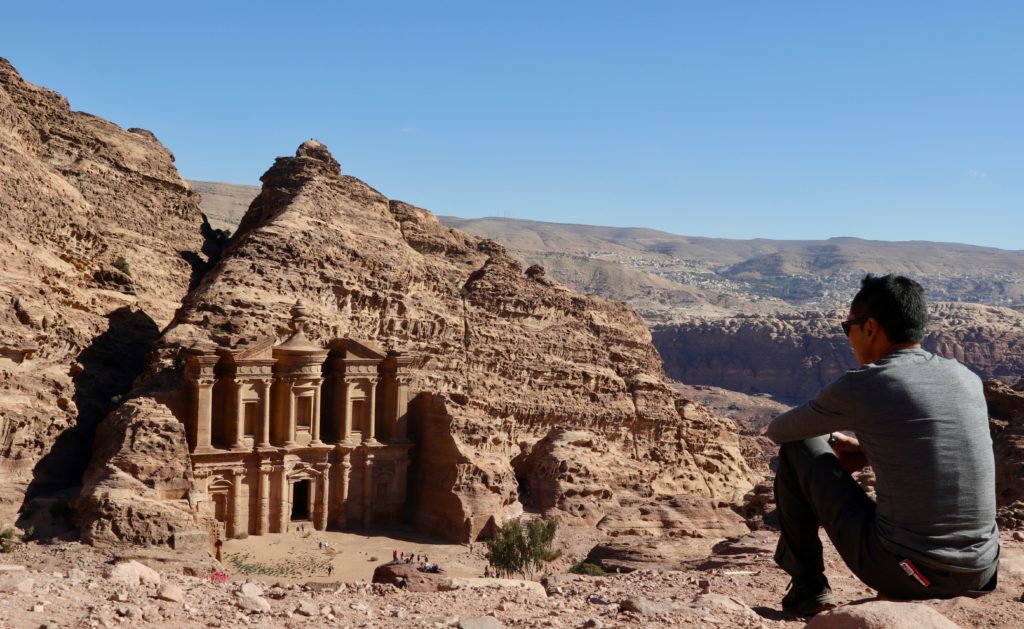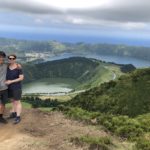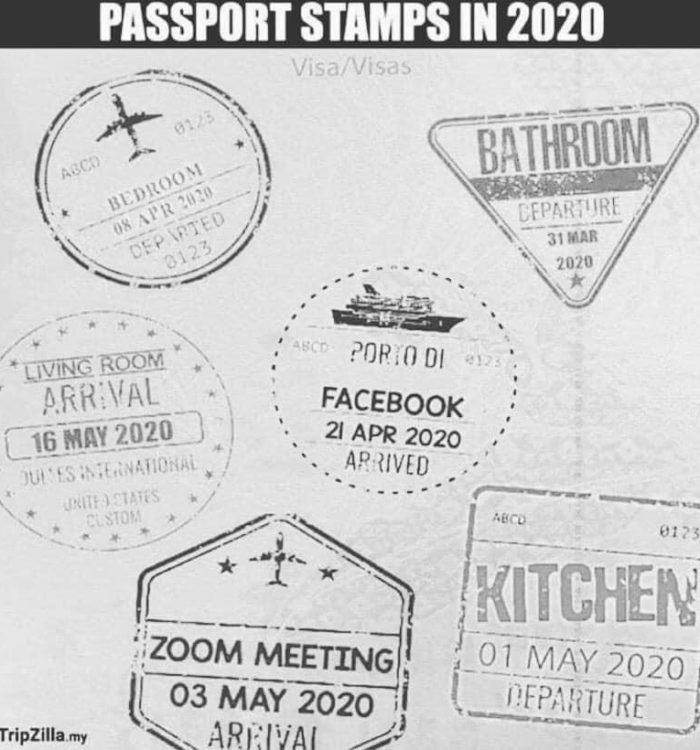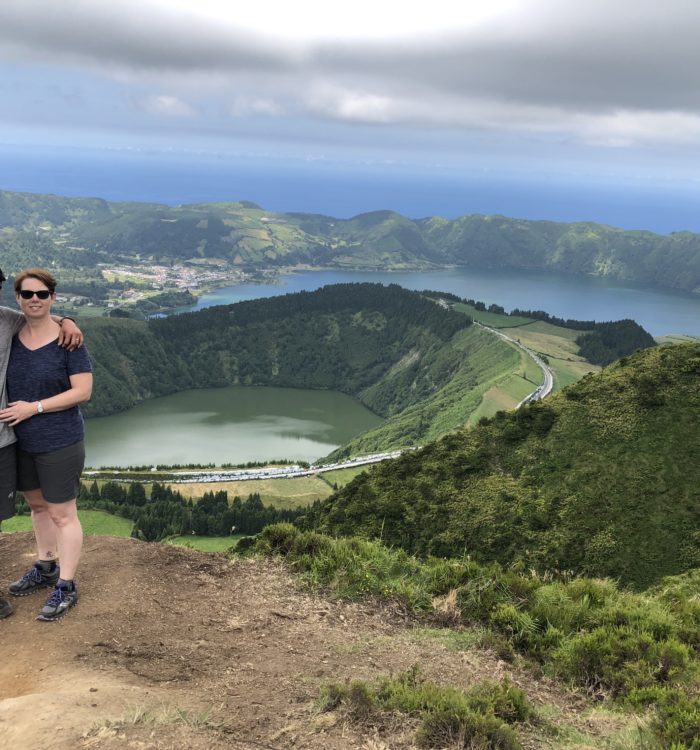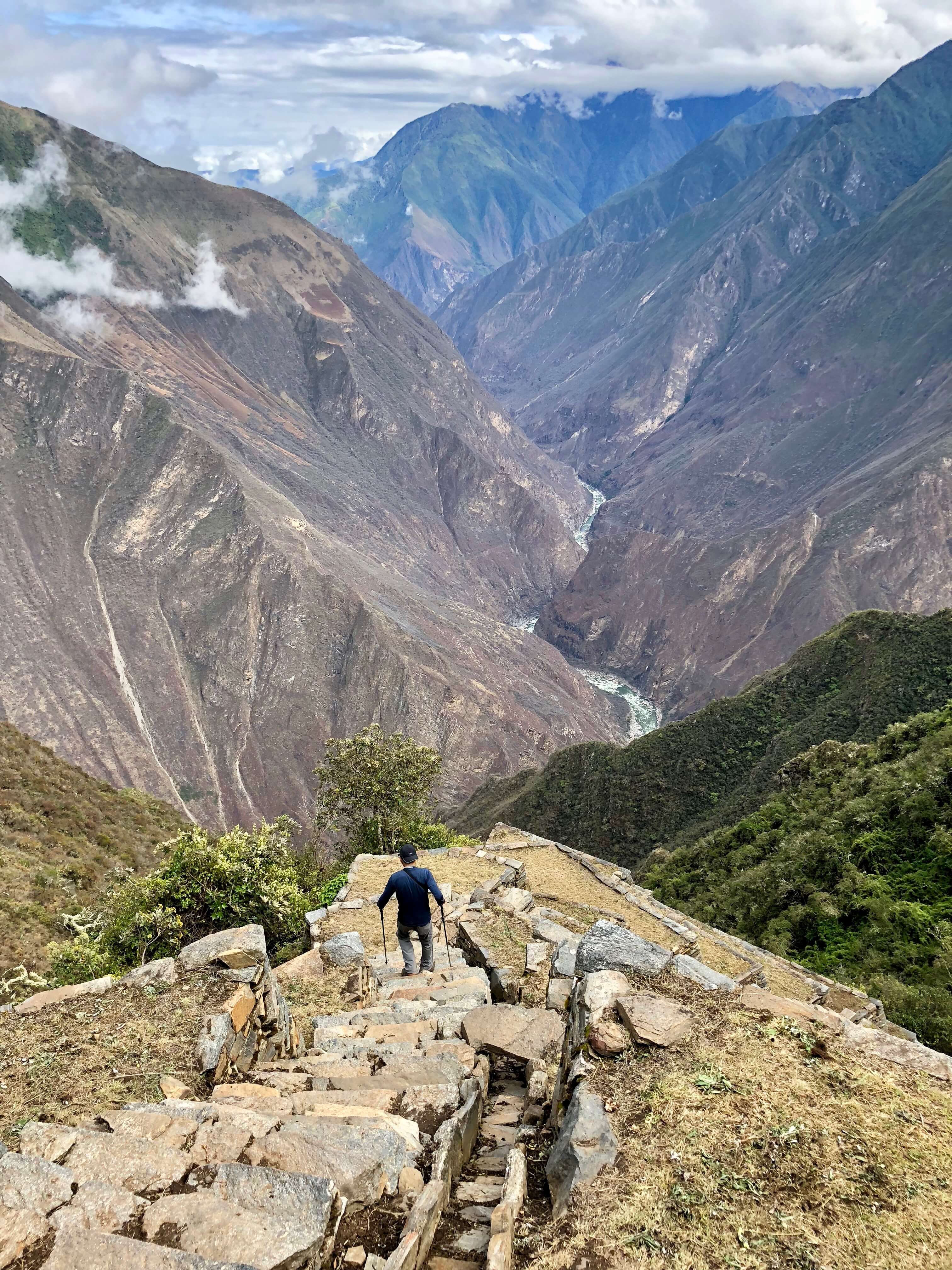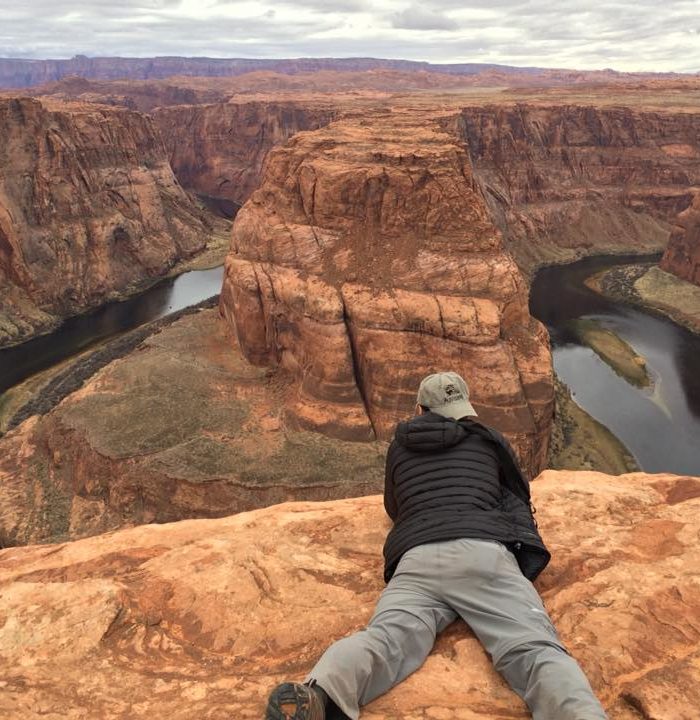Holy Holy Land over the Holidays!
I have had a recent string of travels that didn’t quite turn out as planned. The Arctic, India, Peru and the Azores—all were great runs but were aborted or shortened due to a variety of reasons, including a urinary tract infection in the Azores, how embarrassing. For an aging travel junkie, this adds up to something far worse than any gastro issue or bed bug–doubt. So if there ever was a trip that was designed to humiliate and humble, the Middle East was it. Two 30 hour flight itineraries. Four countries–Israel, Jordan, Palestine and Ethiopia. Four land border crossings. Six flights. Seven different beds over 13 nights. Things could have gone wrong, really wrong.
Addis Ababa, Ethiopia
My road to the Middle East detours through Africa with a 9.5 hour layover. I was told that wandering around Africa’s largest market the Mercato, isn’t safe. However how does one resist the beautiful ugly flowing canvas of organized chaos? I can’t, and jump right in.

Unlike Asian markets, gut challenging street food is missing, and it’s impossible to just blend in. Ya wonder why? I could do without the repeated calls of “China China China,” or “Jackie Chan.” Somewhat outnumbered, I’m not about to point out their insensitivity. But I know the Chinese aren’t fools. They know Africa is the world’s most rapidly urbanizing region. That means opportunity. China has bankrolled most of the infrastructure initiatives on the continent, leaving an ambivalent taste in the locals’ palate. The shackles of western colonialism are rapidly being replaced by Chinese colonialism, minus the pretense of showing them the light and saving African souls.
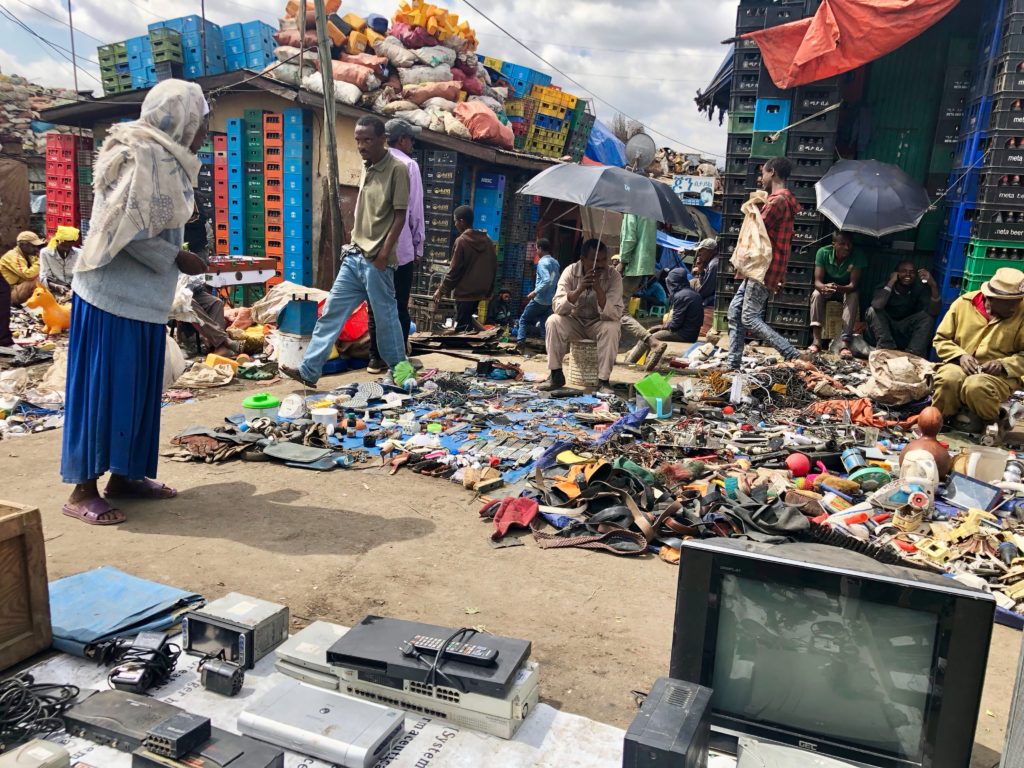
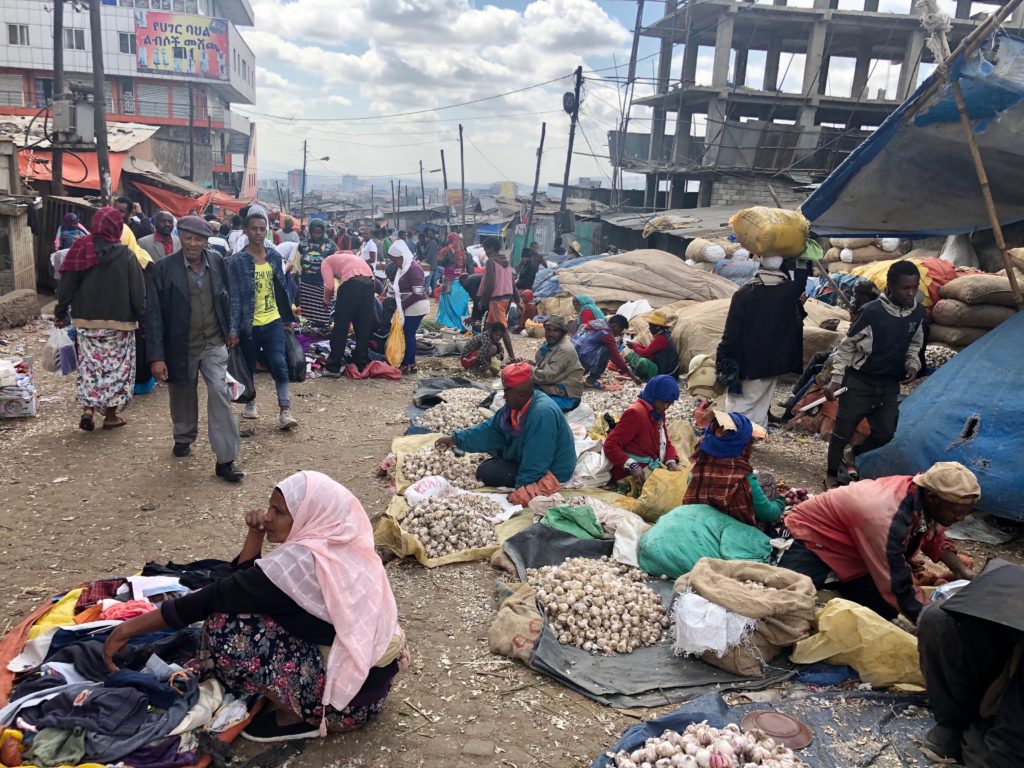
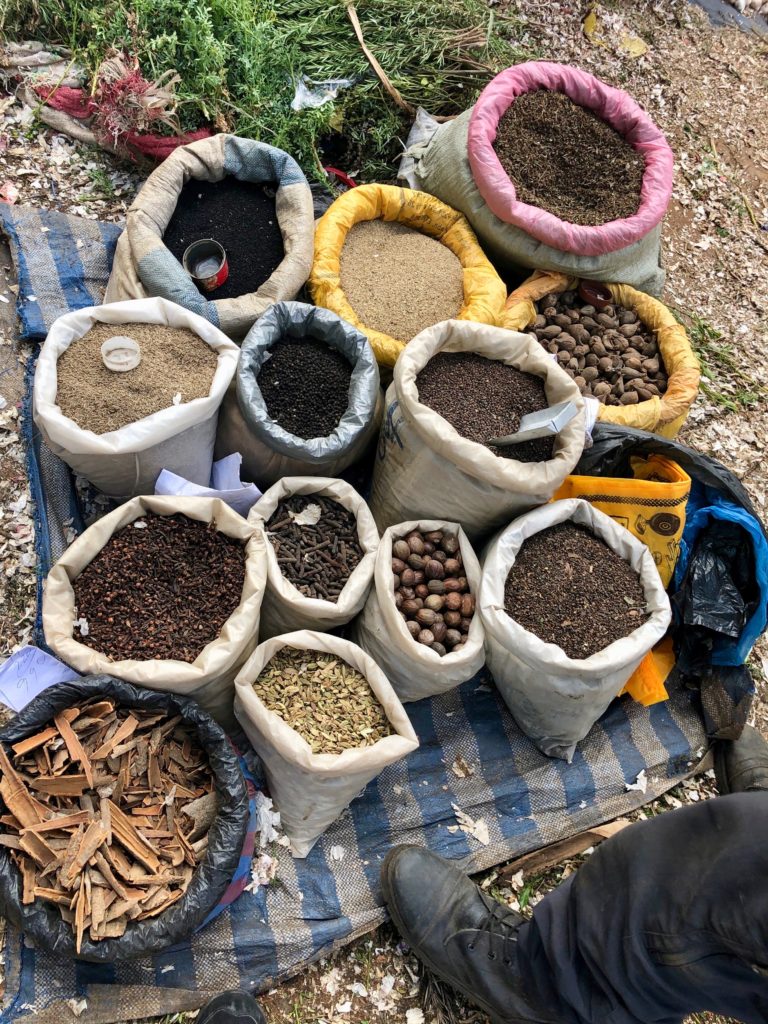
Jerusalem
I Airbnb in Nachlaot, a centrally located old Jewish hood, with a couple of wonderful Jewish lefties- a retired journalist and a shrink with a Freudian bent. They treat me to some traditional Hanukkah delights and aren’t shy about expressing their despair at the expulsion of so many Arabs, how their homes around the Western Wall were destroyed, etc. They lived through the terror of the suicide bombings of the early 2000’s and grudgingly acknowledge that Israeli right wing governments have stopped the bombings, but at a never ending cost. They also lament the loss of Palestinian friendships, something that is no longer possible in today’s Israel and Palestine. For them, they see neither peace nor stability in the horizon. Then they gently admonish Canada for our treatment of the indigenous. Who is without sin, let them cast the first stone.
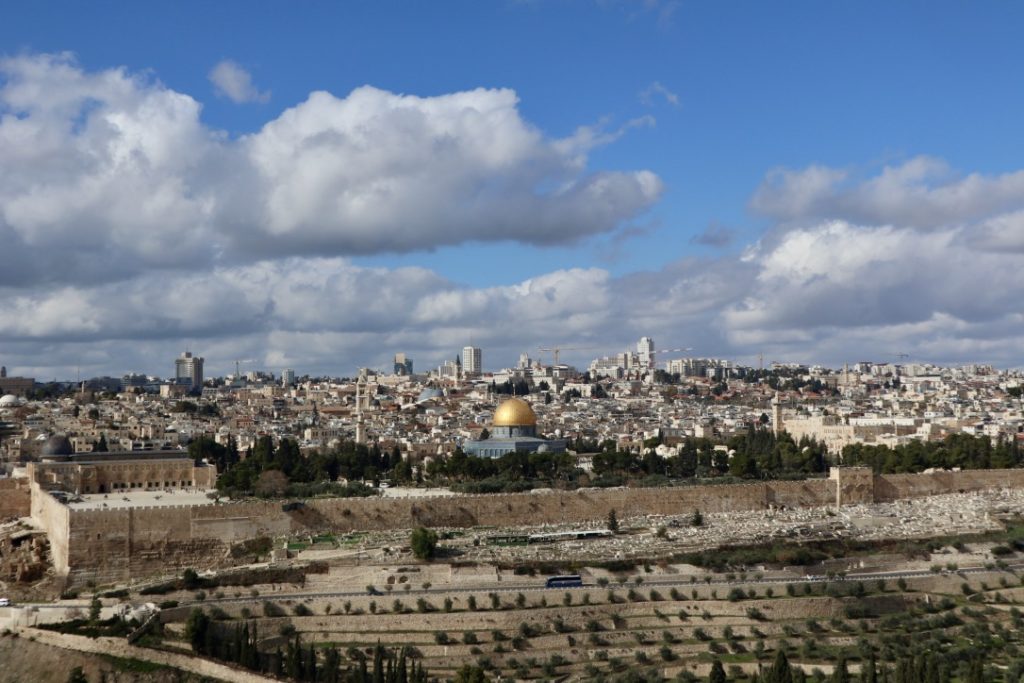
I’m too excited to sleep much and I’m up early, and make my way to the Old City where I join a line-up for a warm blend of two hummus’ and crispy falafels with a light, moist filling. This would be my favourite breakfast on the go for the next two weeks.
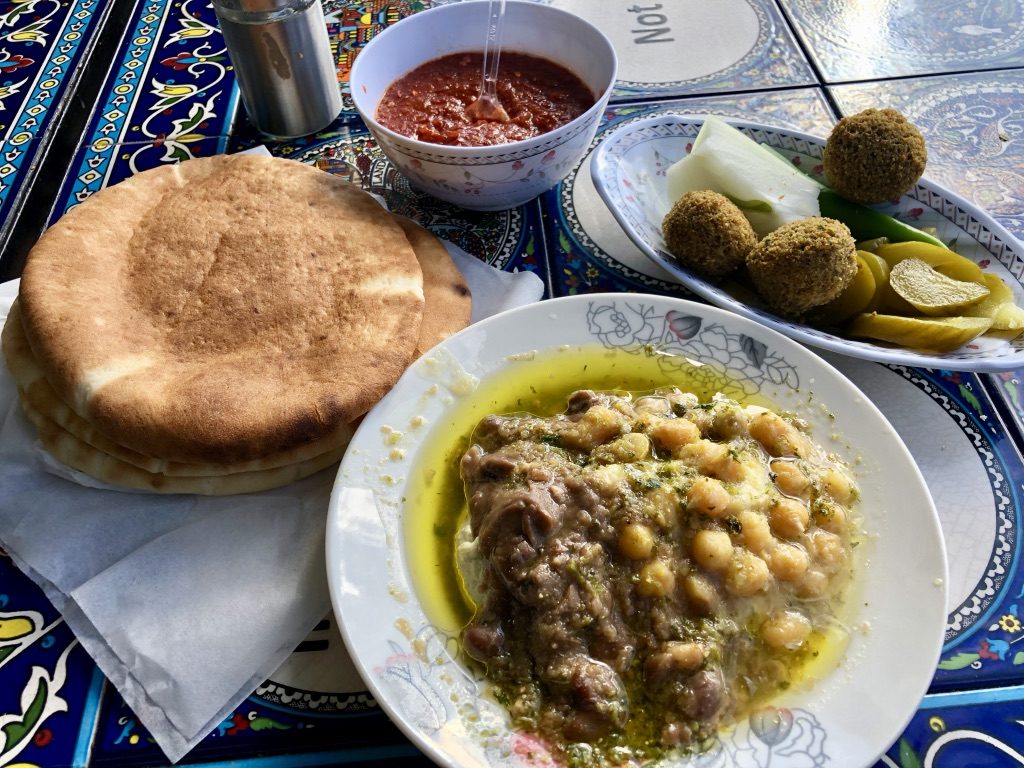
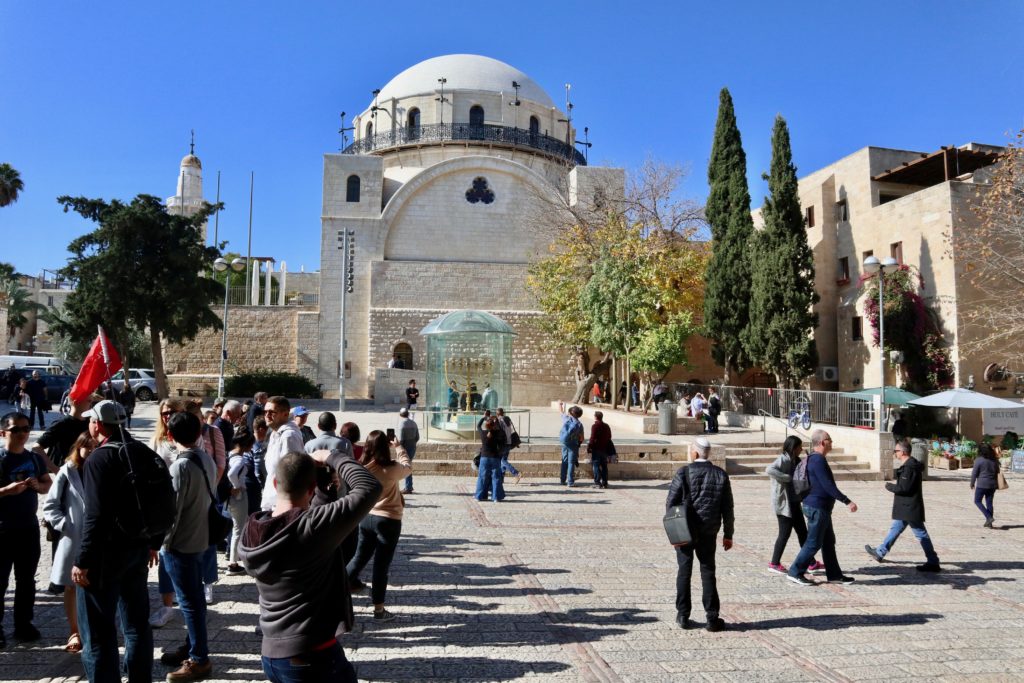
There are other ruins with deeper histories in the world–the pyramids at Giza, Persepolis in Iran. However ancient Jerusalem is, the buffer of time hasn’t washed away the pain or the past. Old wounds remain raw and while recent band aids can make things functional, there is no antidote for centuries long quarrels. One knows this before going to Israel, but feeling this emotional rupture is something else.
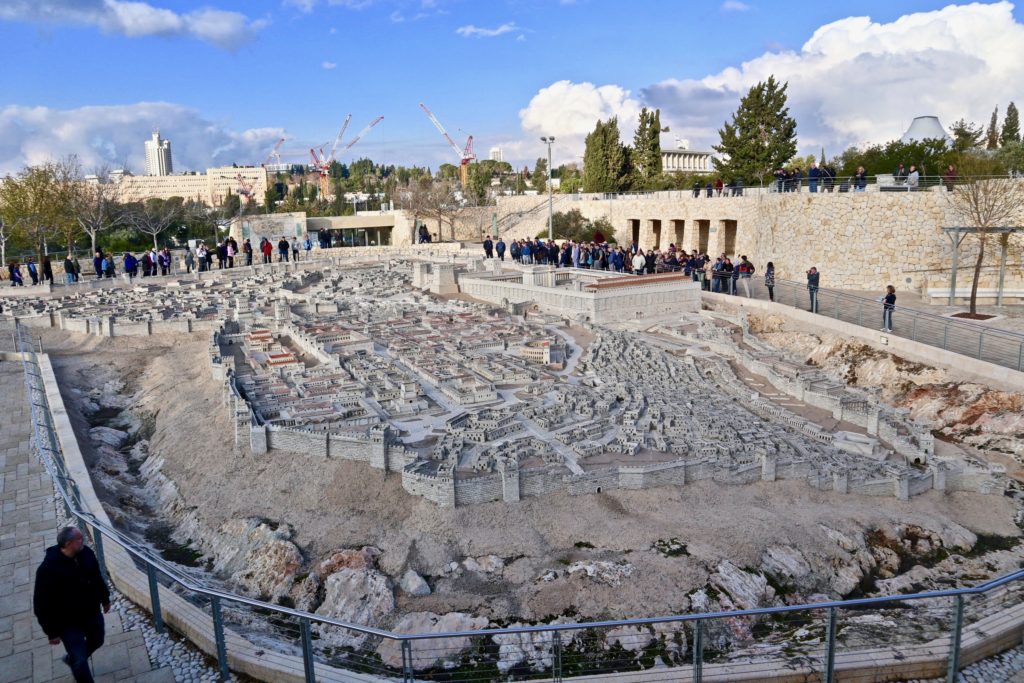
The Old City is ridiculously small, a square kilometre. Yet there’s an intensity, a magnitude that doesn’t befit it’s size. Similarly to Israel and Palestine, it clocks in well above its weight. You will grind yourself to the bone walking up and down the many stone steps. You will overload your senses taking it all in. You will know you’re in the nave of religion and so much of what we call civilization. But there’s a very visceral experience that can’t be captured in historical texts, holy books or pictures.
Three of the holiest sites of the three great monotheistic religions are all within metres of one another, built beside, around and in spite of one another. It feels like so much began here. Our relationship with God. Our relationship with each other. Our cycle of hope and disappointment.
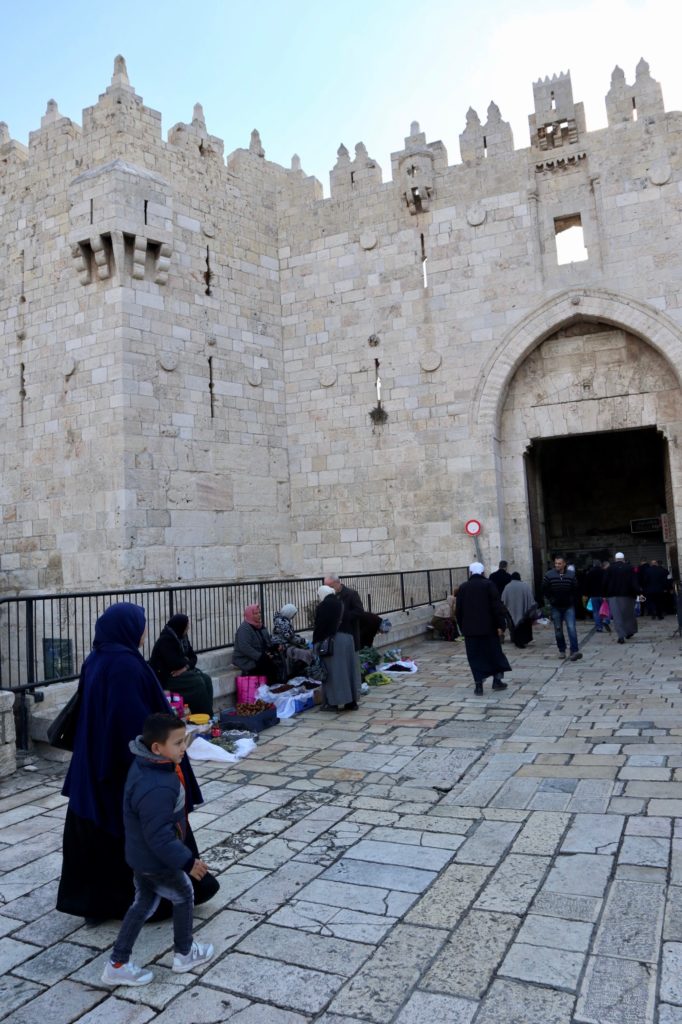
With apologies to the Jews, Christians and Armenians, the Muslim quarter is easily the more lively. Friendly and animated merchants, the best hummus, the 14 Stations of the Cross (somehow I found myself doing them), all fall in here-just follow the praying pilgrims.

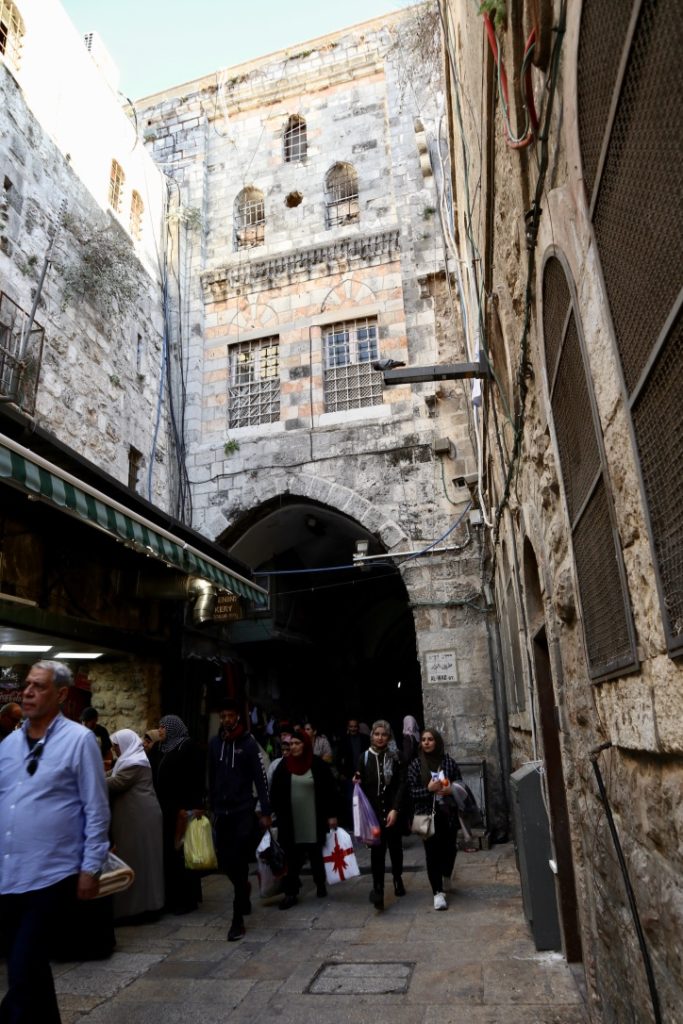

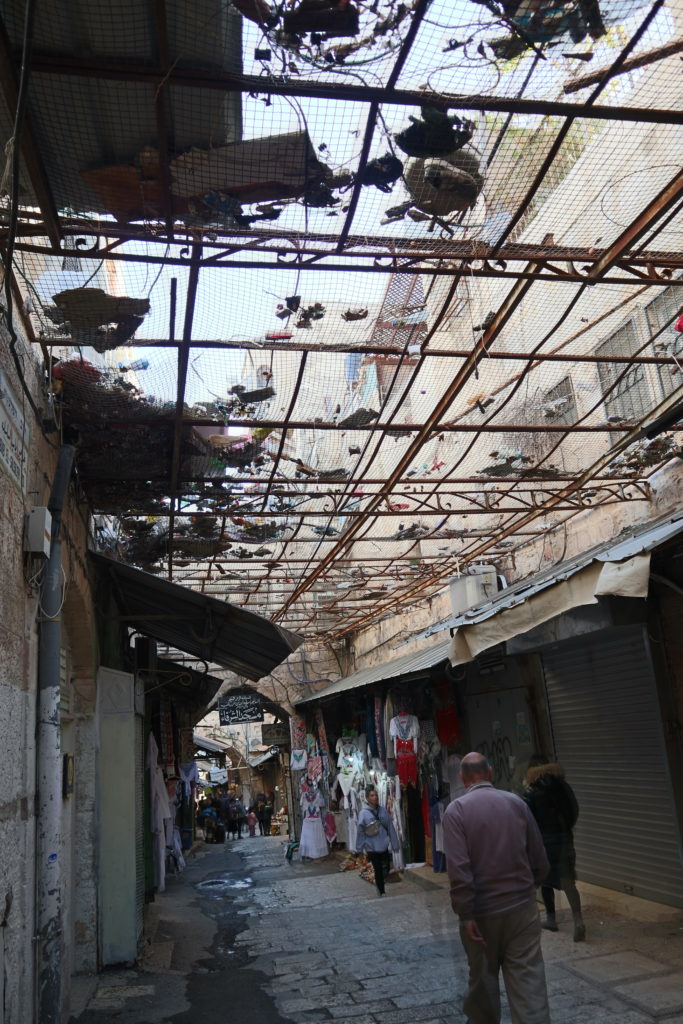
Everybody asked about safety before I arrived. Security and guns are plentiful. But quite frankly I feel safer here than I would winter driving in Canada, or just about anywhere in the US.
Holy Sepulchre Church, despite its modest exterior, is recognized as the site of Jesus’ crucifixion, burial and resurrection. Due to huge crowds, it feels more carnival-like than dignified. One would assume that in the holiest of Christian sites, all denominations would come together.
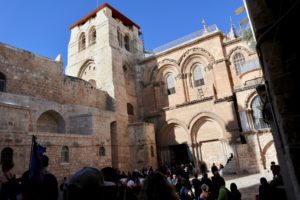
But the church is sectioned and divided off between no less than six denominations, all vying for turf and prestige. Violence among them has occurred. It is so infantile that the keys to open and close the church have been in the hands of a neutral Muslim family since the 7th century. Think about it…Muslims interceding among feuding Christians!
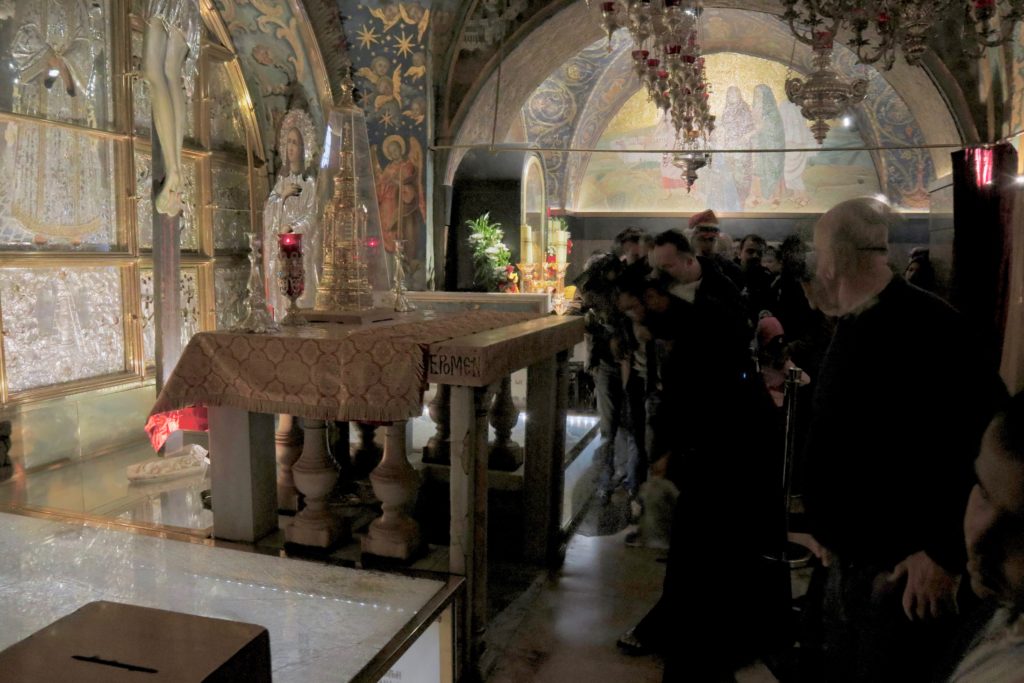
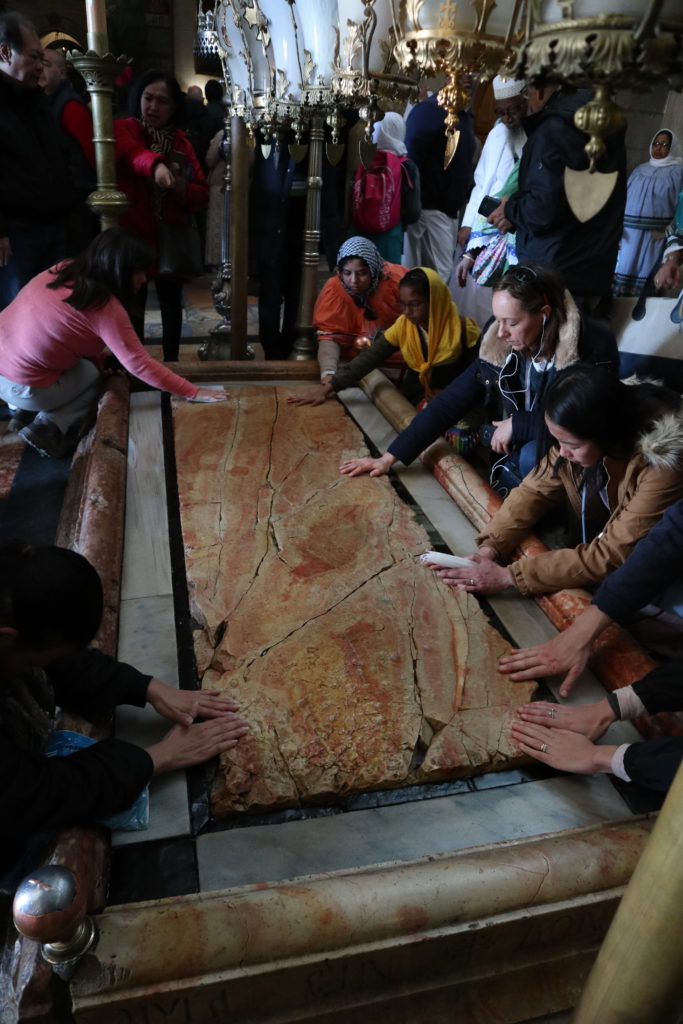
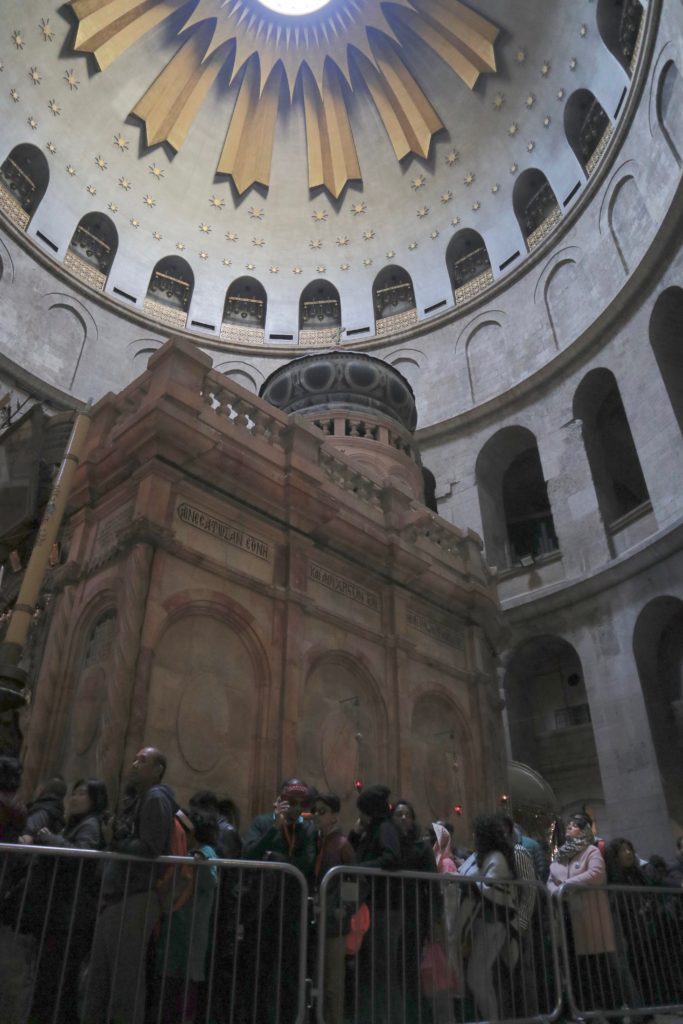
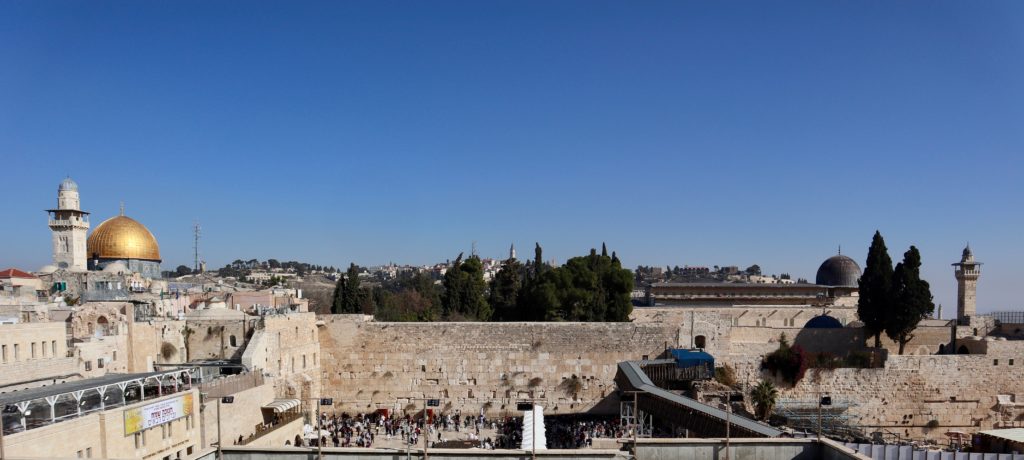
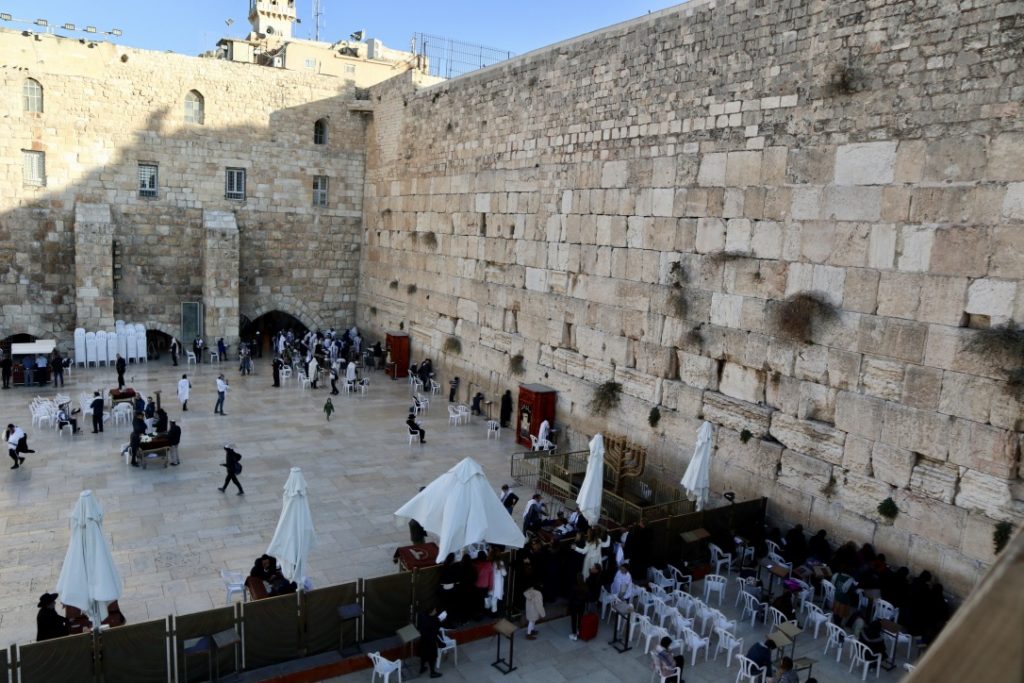
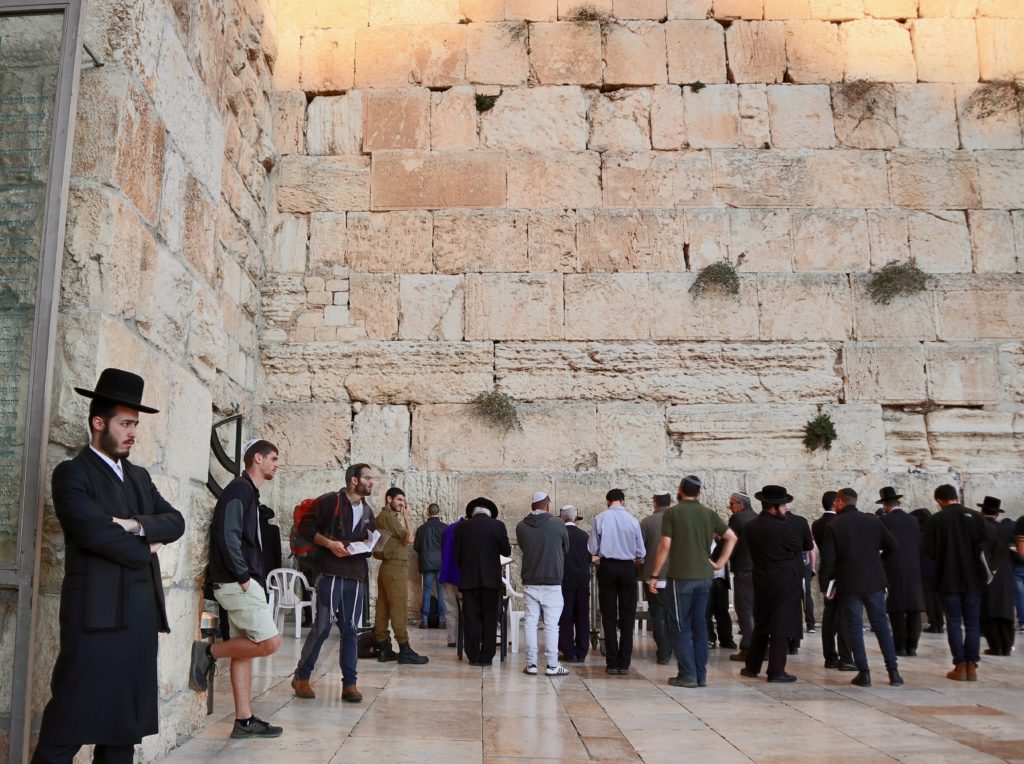
Just shouting distance away from the holy Christian and Jewish sites is the Temple Mount, home of the Dome of the Rock and the Al Aqsa compound.
The Temple Mount is an elevated plaza above the Western Wall, and my can’t miss attraction. It’s the holiest site in Judaism- where God’s divinity is manifested more than in any other place, and the direction Jews turn towards during prayer. It’s also where Abraham was prepared to sacrifice his son Isaac, where Jesus walked, where the Messiah will return, where Mohammed ascended to heaven and so on. Due to its extreme sanctity, many Jews will not walk on the Mount itself.
Despite the heavy security, there’s serenity to the expansive space, at least before the tour groups arrive, unlike the claustrophobia in much of the Old Town. Islamic architecture is my travellers achilles heel, I can’t get enough.


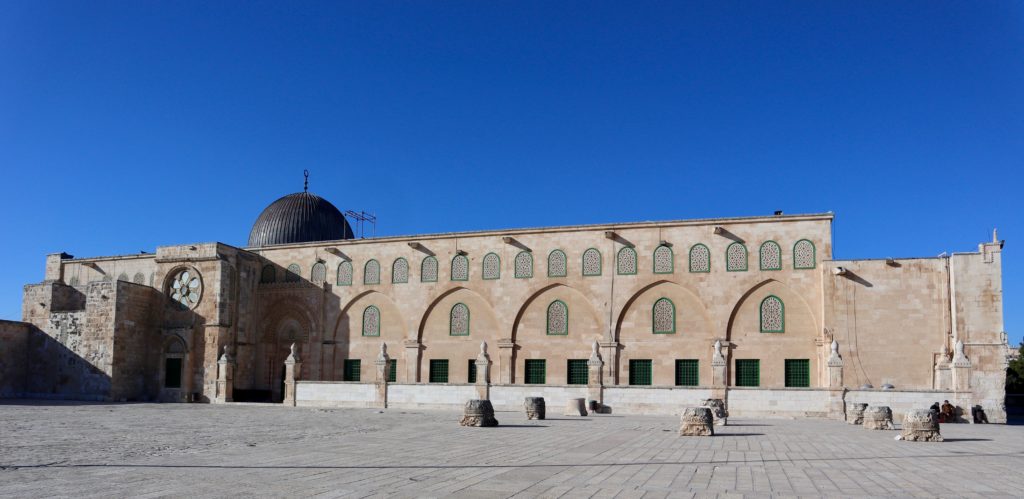
Masada
From Jerusalem, a standing room only, slow public bus takes me to the desert mountain fortress of Masada. Along the way I chat with some soldiers on leave, making their way to the Red Sea for some diving. One had been to Canada’s Algonquin Park and loved the idea of drinking water from lakes. I guess nobody warned him about beaver fever. I ask him about life in the army. He says it’s excruciatingly boring most of the time.

Masada is famous as the last Jewish stronghold during the revolt against the Romans. Just before the Romans stormed in after years of siege, the rebels immortalized themselves by choosing their own death and freedom over slavery. It is now an Israeli tween rite of passage to climb it. Unfortunately, they all happen to be there as I ascend. In an impressive display of school and nationalistic loyalty, they sing and chant as they labour upwards, with nary a selfie in sight.
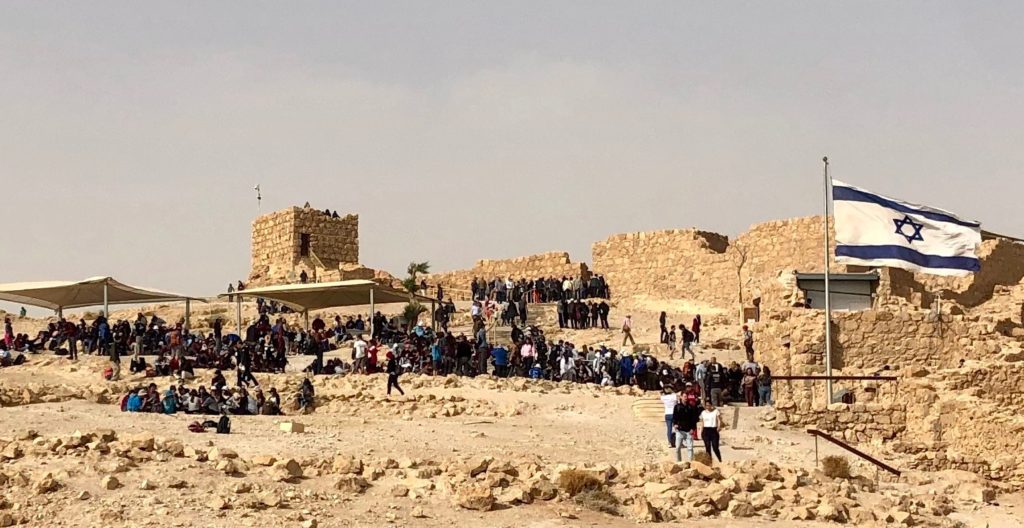
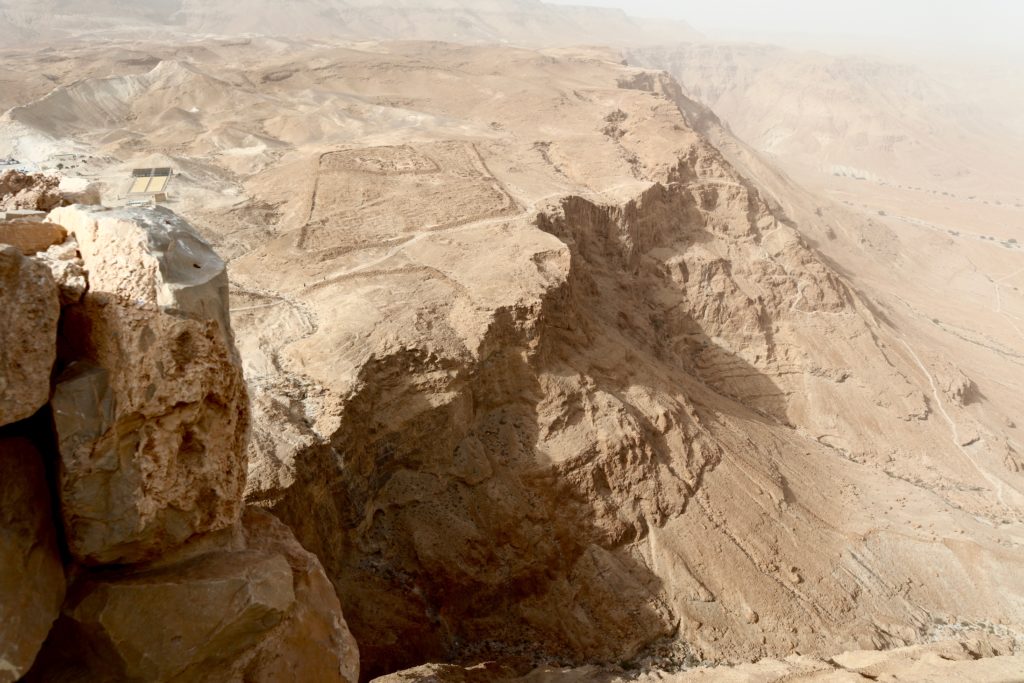
Many hours behind schedule and exhausted (now the new norm), I board another slow bus to the Israeli-Jordanian border. While driving along the western coast of the Dead Sea, I chat up a family on their way to the Red Sea for some sun. Originally from Russia, they reflect Israel’s success at winning the emigration war. When much of the western world’s population shrinks, Israel has skillfully persuaded diaspora Jews to return and breed. While that includes many Ethiopian Jews, you’re more likely to see many highly skilled, educated elite from Eastern Europe and the U.S.
Under a new moon, a young American backpacker and I hoof the last 2 kilometres along a quiet road to the border. Halfway he ditches some weed he grew on a kibbutz up north. It’s probably a good move as the Jordanian border guards give him the kind of scrutiny that reminds me of the film Midnight Express. I sail through the gauntlet of bored and grim looking guards, who smile at my rudimentary Arabic. The American eventually gets in, and together we wade into the inevitable drift net of taxi drivers. It’s a long walk into Aqaba so we have little negotiating power and really, we just want a beer.
Aqaba
Despite a very long day, Aqaba makes me smile. Not because I enjoy the ubiquitous cigarette smoke everywhere, or the lung busting car exhaust, or the end of the dial volume levels of the streetscapes. In fact these would wear me down after a modicum of exposure. But the ballet of bedlam, the hustle, the feeling that anything is possible, and that you are so detached from norms and comfort levels that you are liberated, free. It’s a wonderful byproduct of being on the road. Yes it becomes draining, and at times exasperating, as one must always be “on”. Ultimately though, the benefits far exceed the hassles.
Yet I don’t stick around. After a breakfast of chicken livers and falafel, Wadi Rum awaits and the small luxury of a private taxi takes me to the desert.

Wadi Rum
You’ve seen Wadi Rum in films—Lawrence of Arabia, Dune, The Martian, Prometheus, Star Wars —and It is as magnificent as it appears.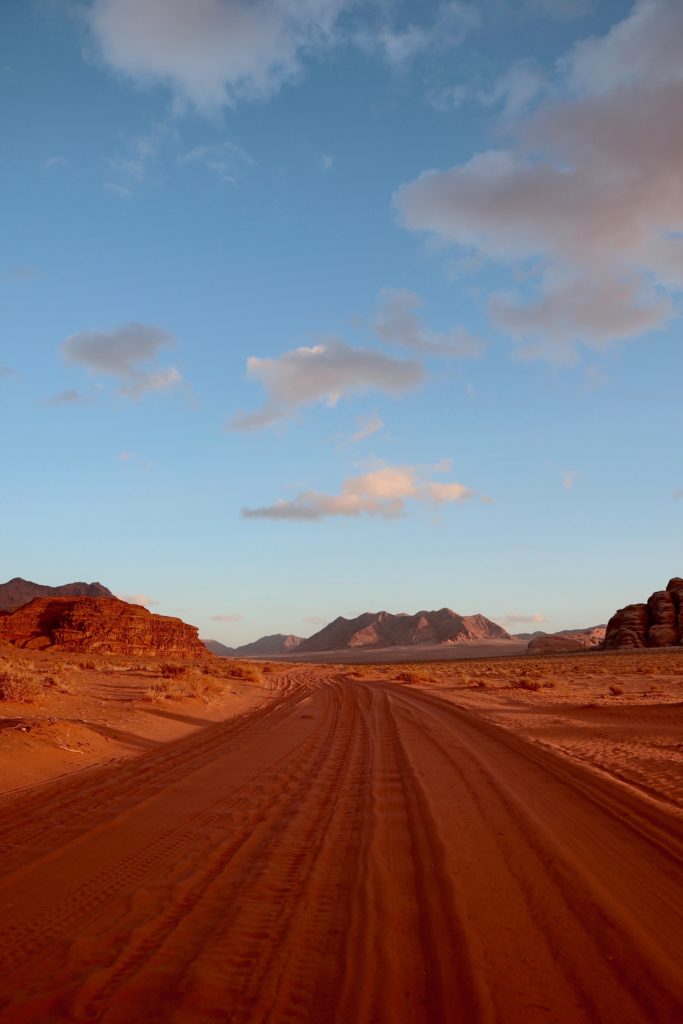
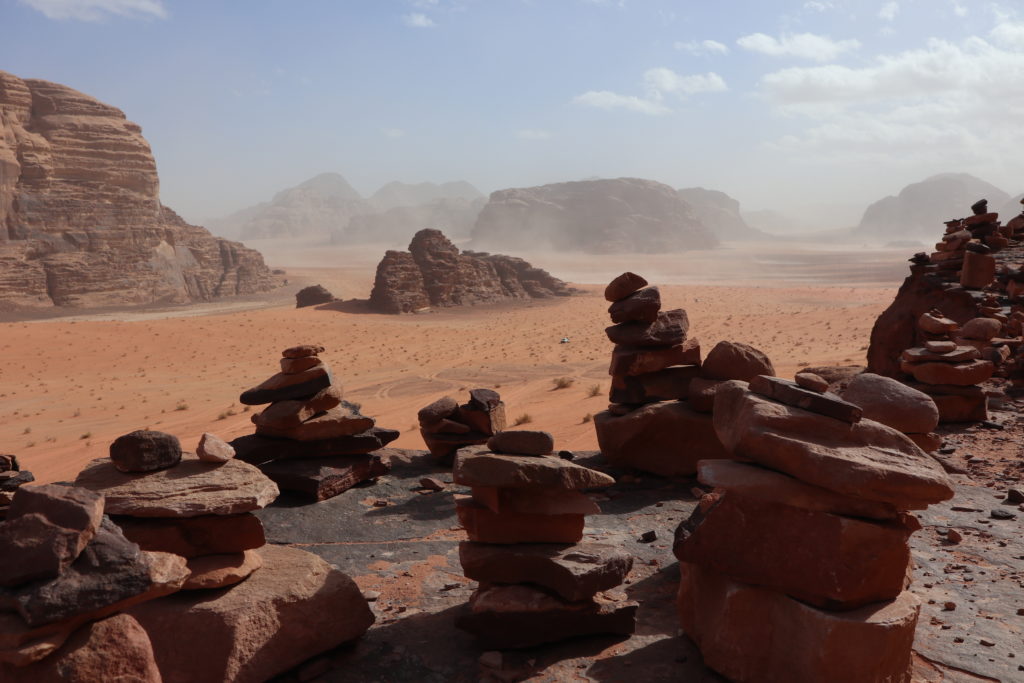
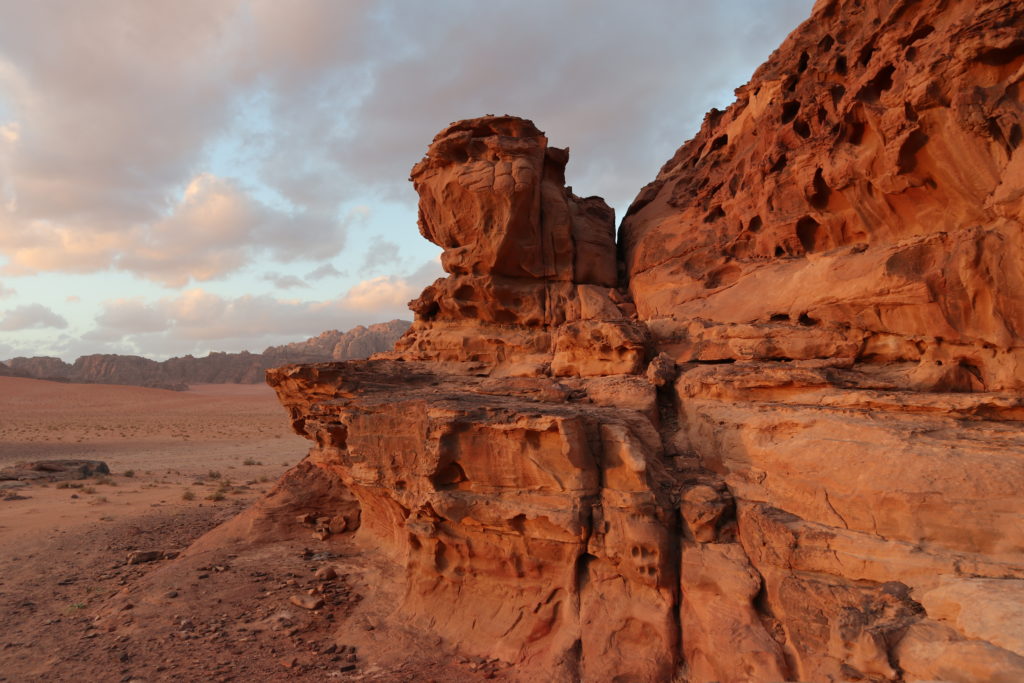 While Wadi Rum may remind some of Zion National Park in the U.S, the Bedouins add a special depth to the experience. Most no longer live a nomadic life (the tourist dollars come to them) and AWD vehicles have replaced camels, one still gets the feeling they live for the moment.
While Wadi Rum may remind some of Zion National Park in the U.S, the Bedouins add a special depth to the experience. Most no longer live a nomadic life (the tourist dollars come to them) and AWD vehicles have replaced camels, one still gets the feeling they live for the moment.
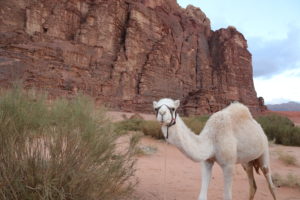
One long-time expat told me that the Jordanians do exceptionally well when the tourist season is strong. But they don’t plan ahead, nor anticipate the inevitable lows which mirror regional politics.
Our ‘traditional Bedouin camp’ includes a communal dining and lounge tent, replete with a wood stove (wood is imported from the north) and a gas heater.
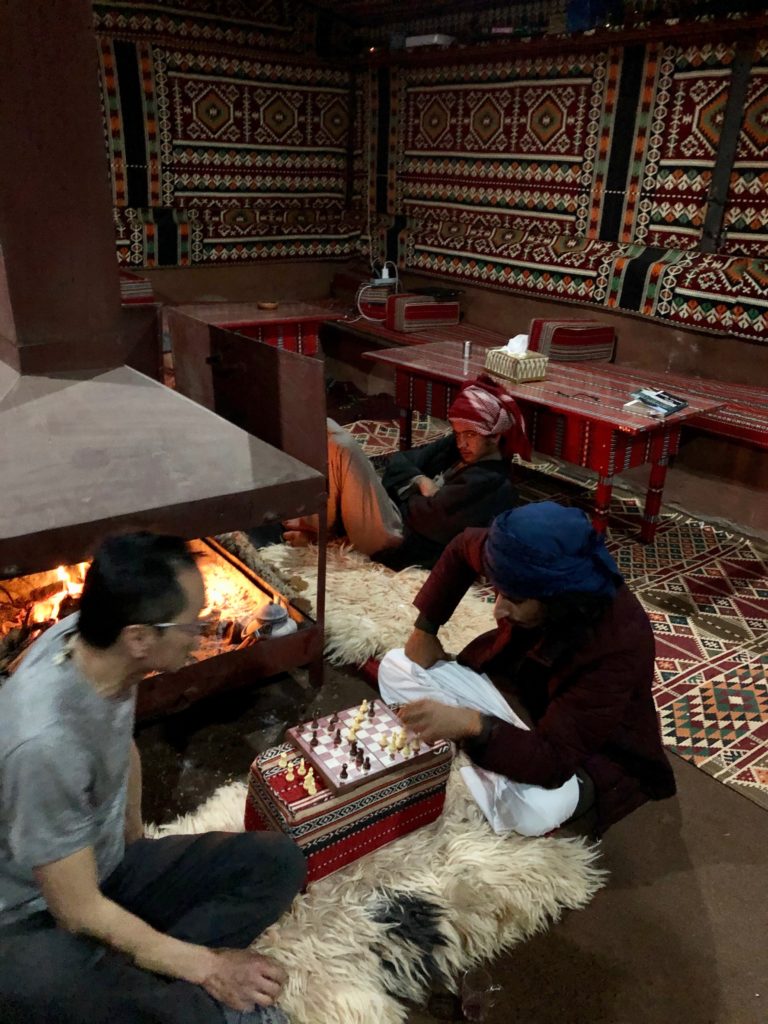
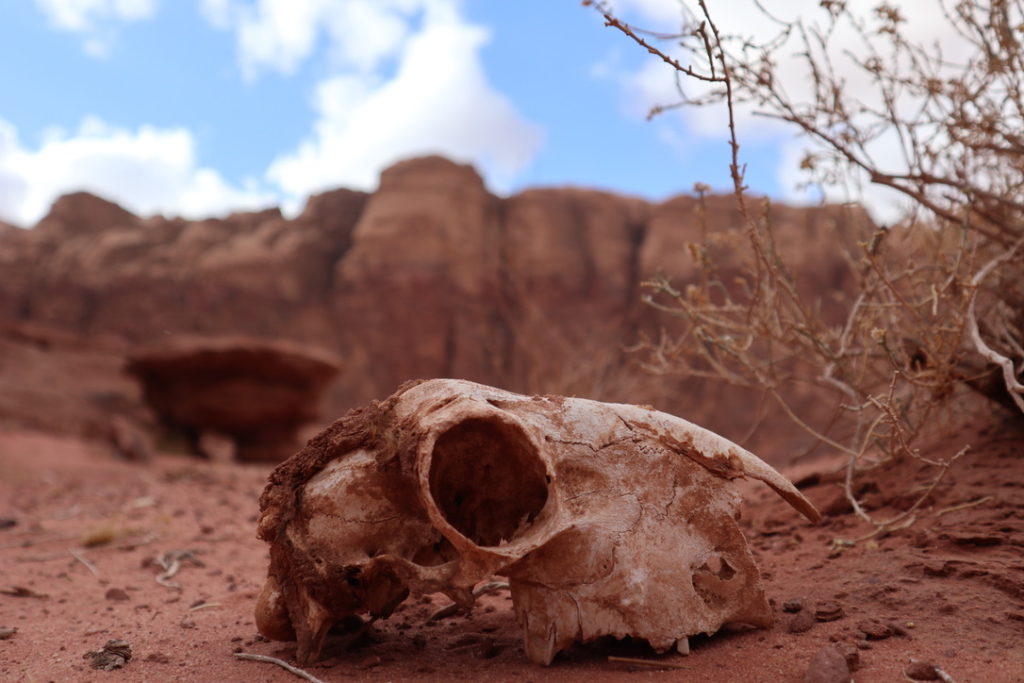

We’re fed fresh fruit, vegetables, eggs, and chicken, all of which are imported and undoubtedly not a traditional desert diet.
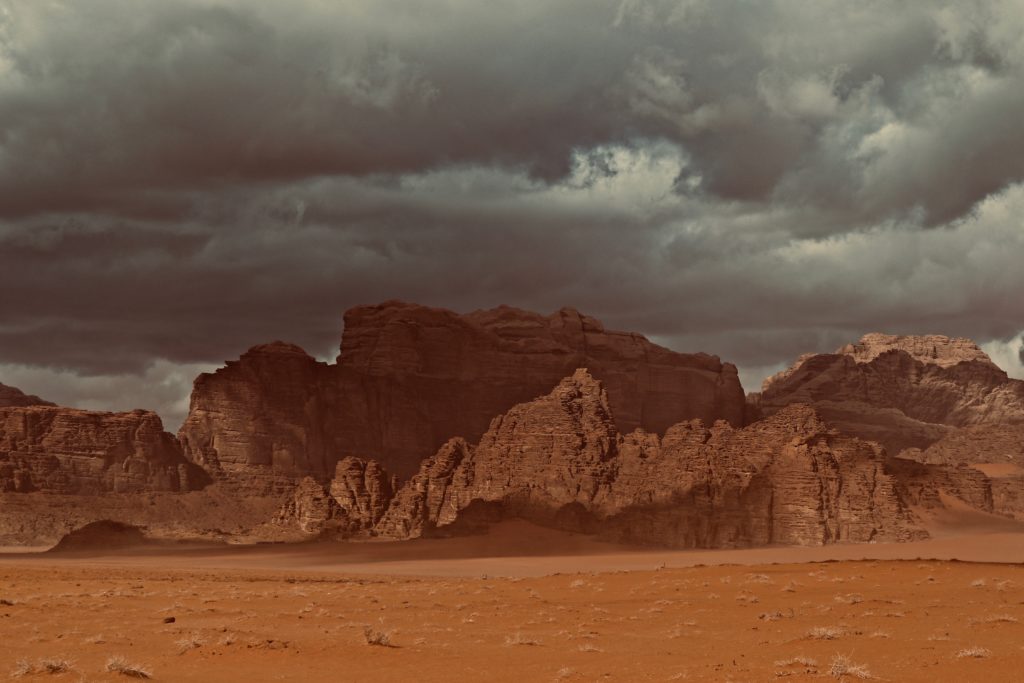
The Bedouin story is intriguing. Not unlike indigenous populations elsewhere, many were forcibly urbanized. Their weather beaten facades were replaced with heart disease, obesity, and diabetes.
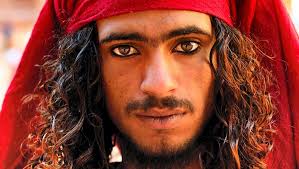
One fascinating tidbit are the sex scams. Some young Bedouin men, more so in Petra than Wadi Rum, adorn themselves with a Johnny Depp Pirates of the Caribbean shtick, lather on the charm for western women who fall for them, and are eventually extorted, bilked or coerced for money. Some give it willingly. After all, love isn’t free. Out of embarrassment for her community, the woman I rent a room from in the Bedouin village Umm Sayhoun near Petra, begs me not to speak of this to anyone. I don’t have the heart to tell her it’s all over the internet. A Facebook page has been devoted to warn and support women who have been scammed. I should say western men are also prey, as I’m invited back to one of their man caves. I never thought much of Johnny Depp, so I decline.
As breathtaking as this is, most day long AWD tours follow a set route. Most everybody sees the same things, though some camps are definitely flashier than others and have better trained guides. My 14 bed dorm cost $10US a night with breakfast. Glampers can pay $350, get 2 meals, their own bathroom and wifi. In the end, sand gets into everybody’s eyes.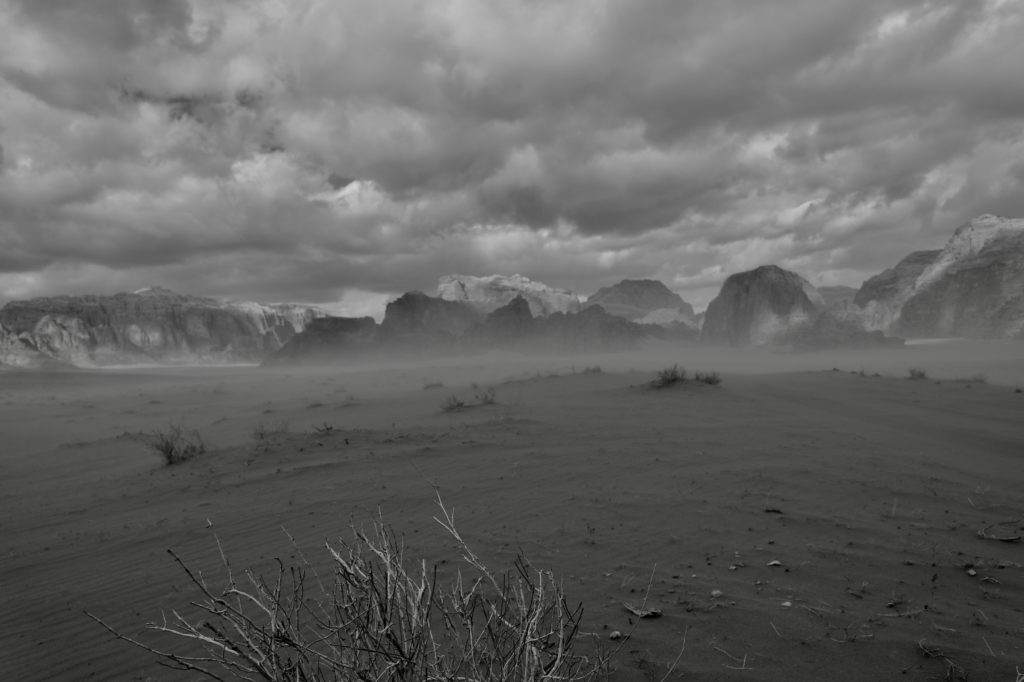
Petra
I sardine onto a mini bus to Petra where in Wadi Musa, the adjoining town, mass tourism is imprinted everywhere. Almost all locals are in on the tourist gravy train. After a prolonged hunt, I find a ‘cab’ to the Bedouin village and my Airbnb. The driver shares the shock his parents felt moving from a cave to two rooms and a kitchen, working everyday hustling selling camel rides and trinkets to tourists. He offers to chauffeur me the rest of my time in Jordan. It’s tempting, as it would alleviate a chronic fatigue, but I decline. The persistent driver continues to call me for the next few days, hoping that I will change my mind.
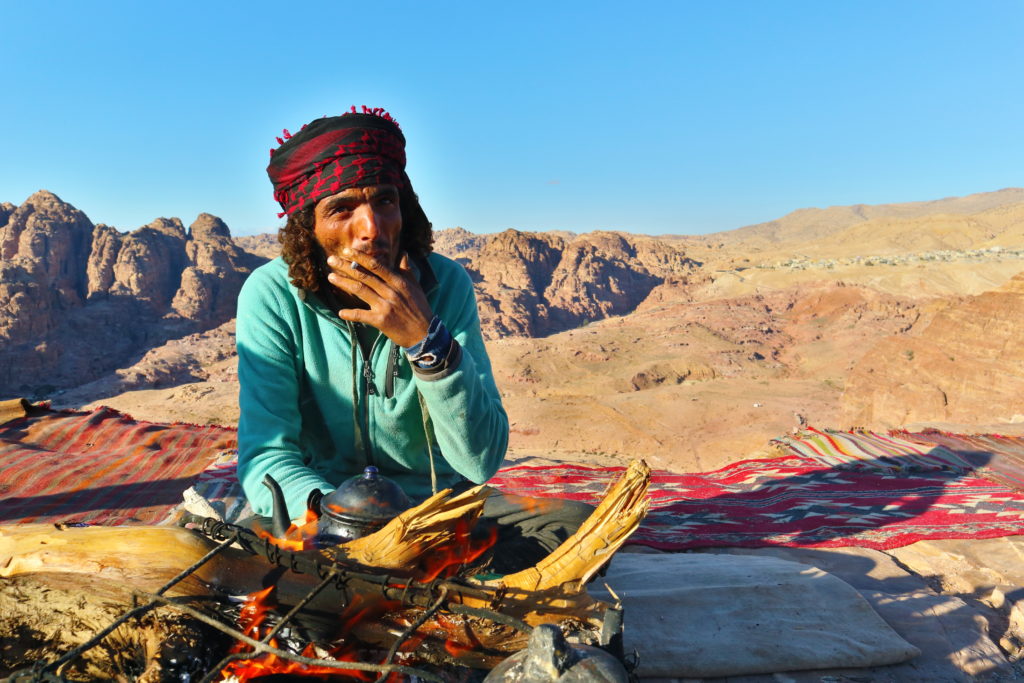
I’d never heard of the Nabataeans before. They were master sculptors and traders who chiseled and hollowed away mountains into the trading hub we now call Petra.
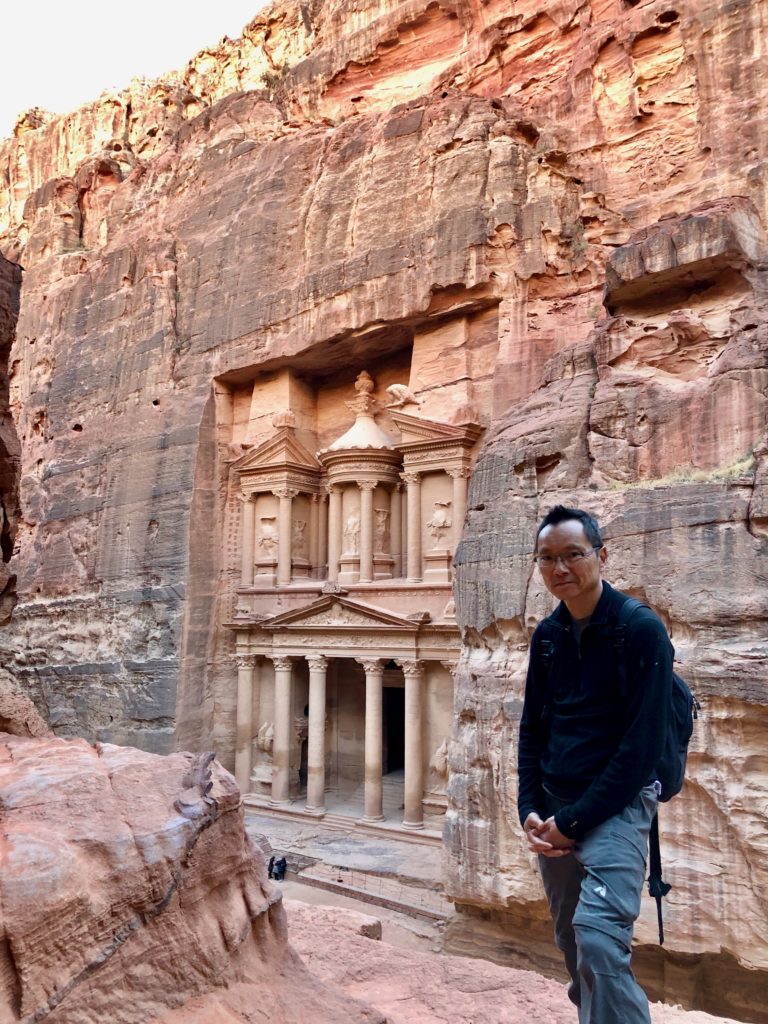
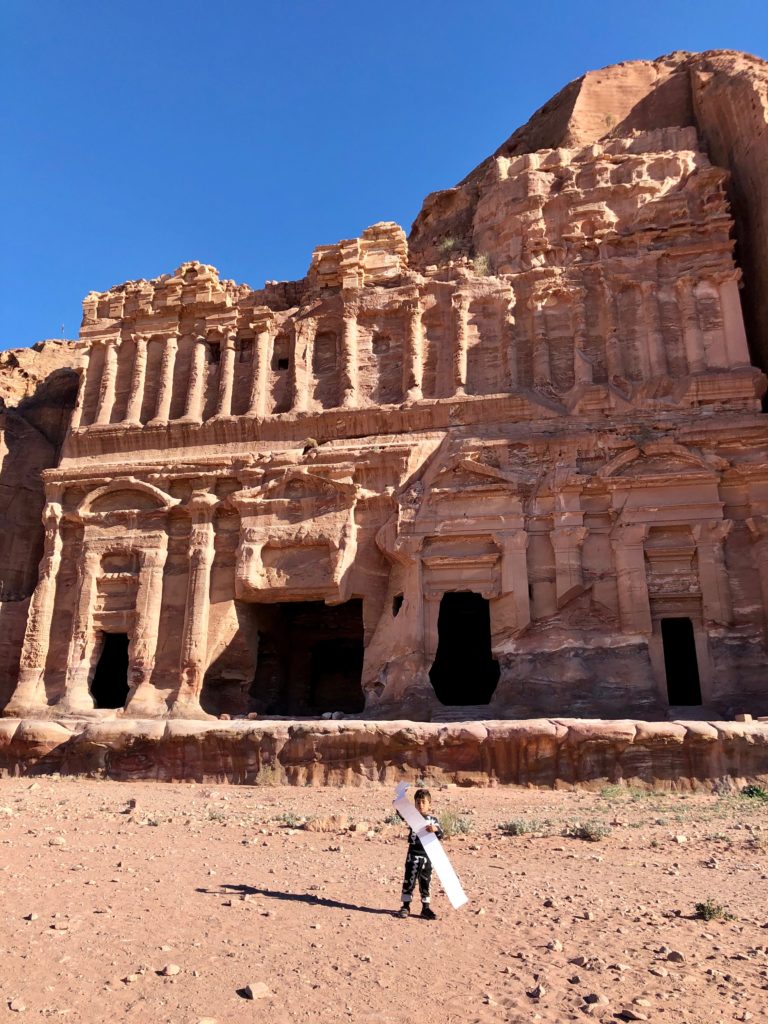
Fusing Hellenistic architectural flourishes, Petra is absolutely marvelous and best appreciated at low crowd times, and quietly along trails less traveled.
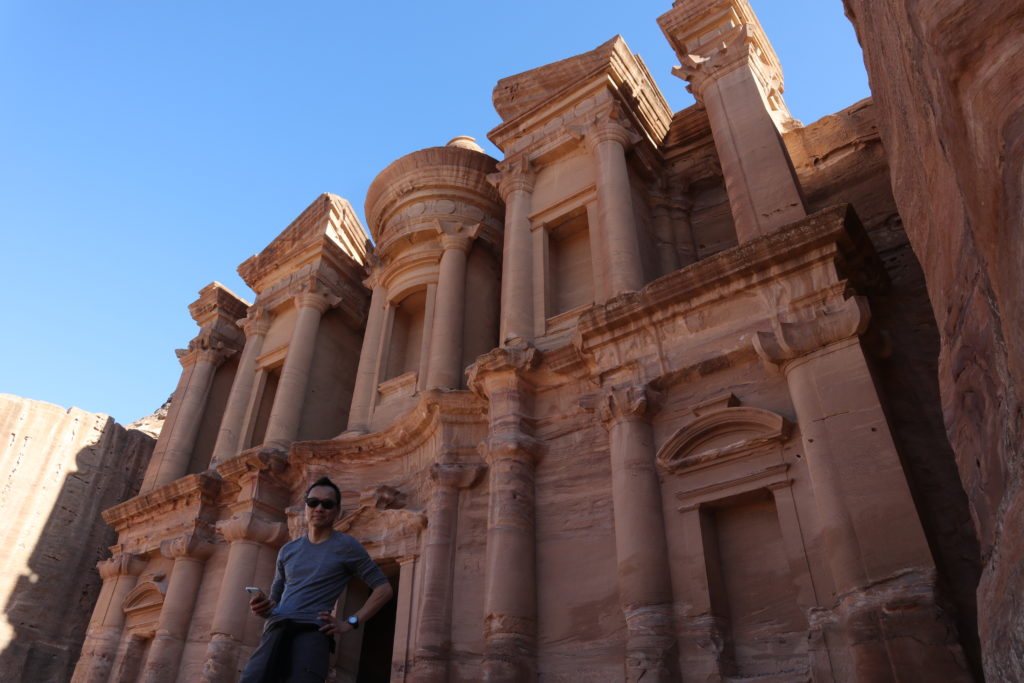
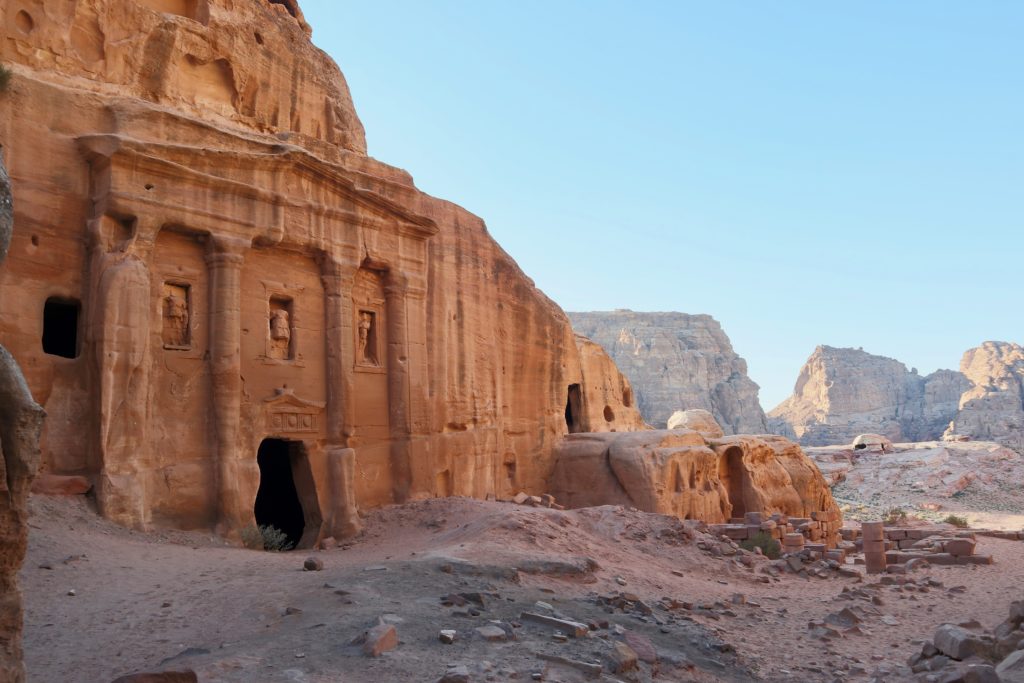
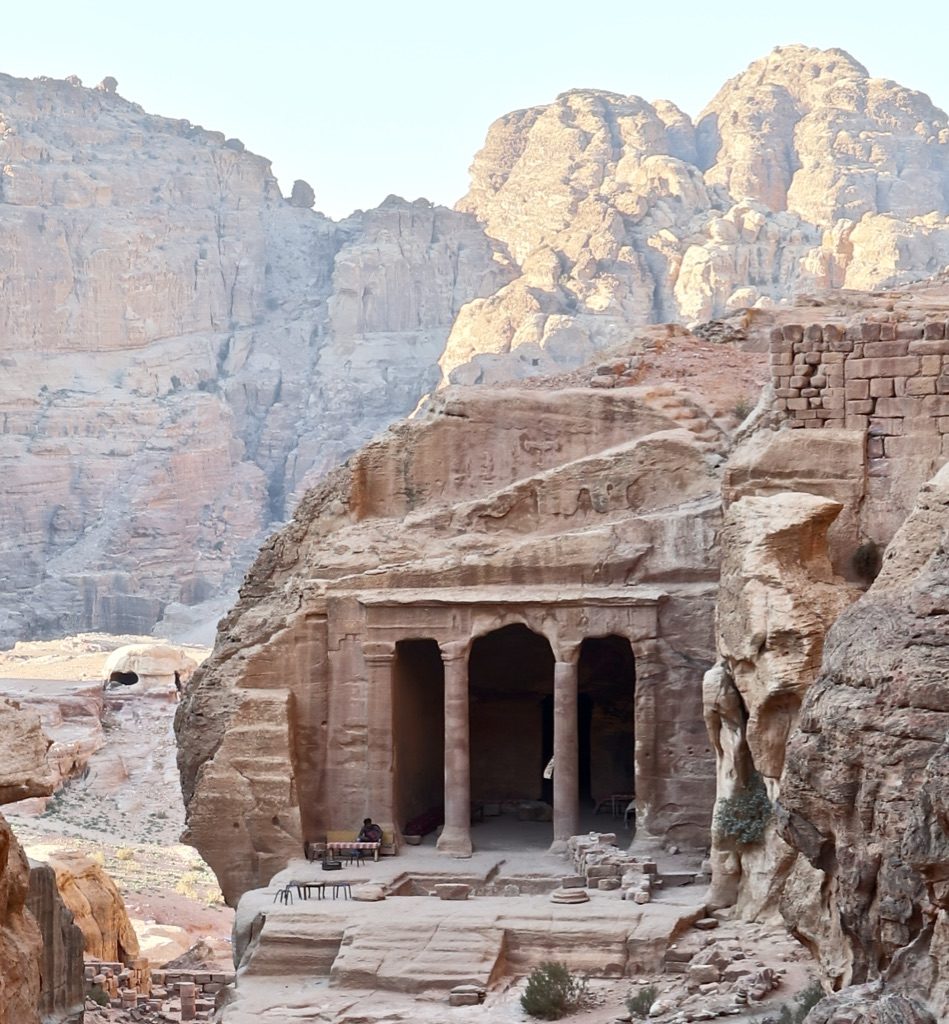
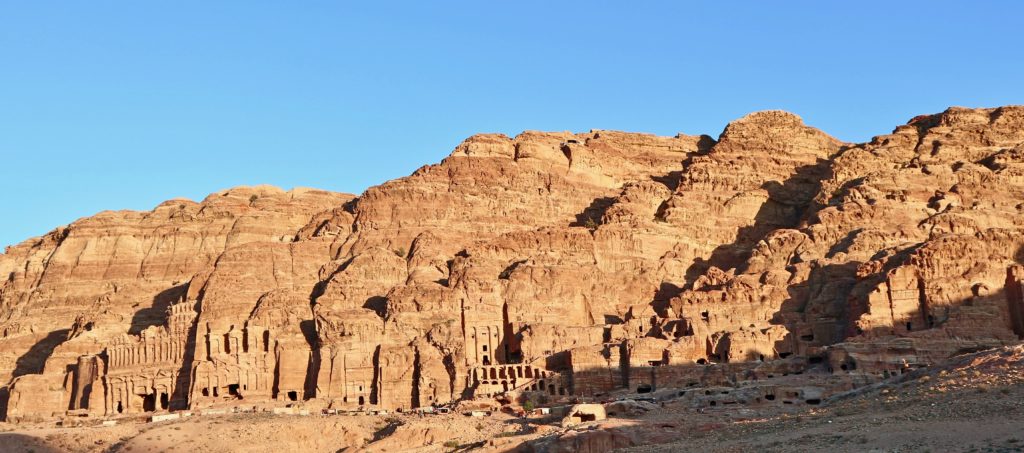
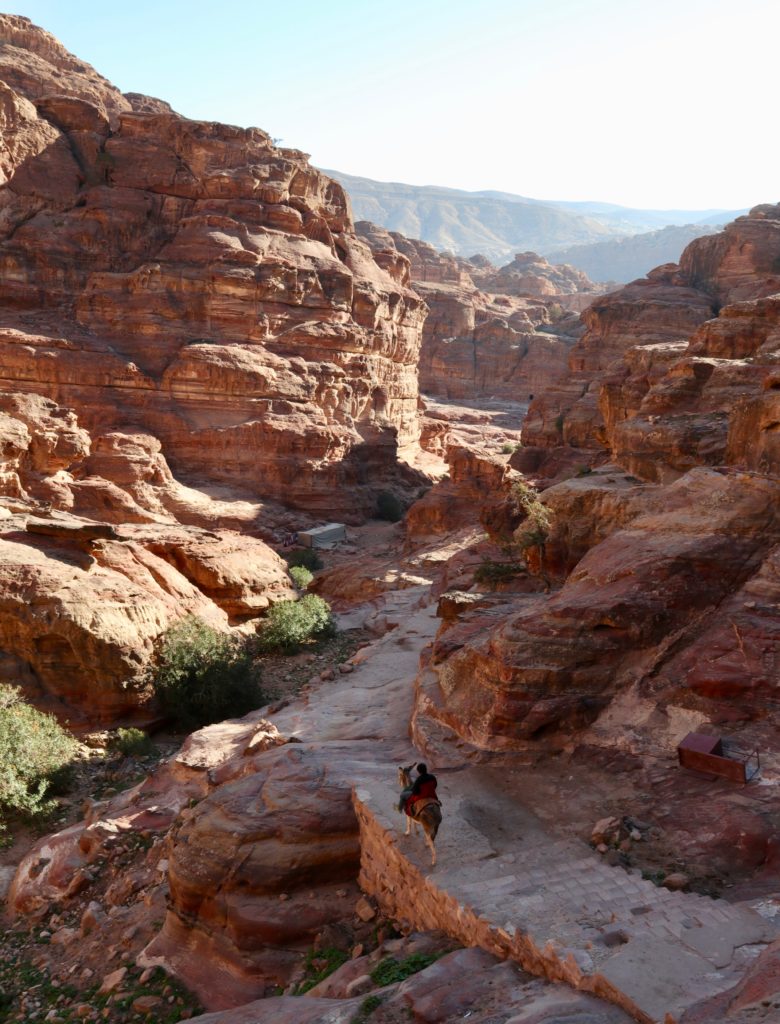



Amman
Another mini bus takes me to Amman, Jordan’s capital. I Airbnb with a family in an apartment that doubles as a heart surgeon’s clinic. I guess even Doctors have to hustle. It’s colder here than the desert, and they have patients scheduled, so I make for downtown. It’s New Year’s eve and the streets and roads are gridlocked. The pollution levels remind me of Delhi. Only the eye-popping 2nd century, 6000 seat Roman amphitheater draws my interest.
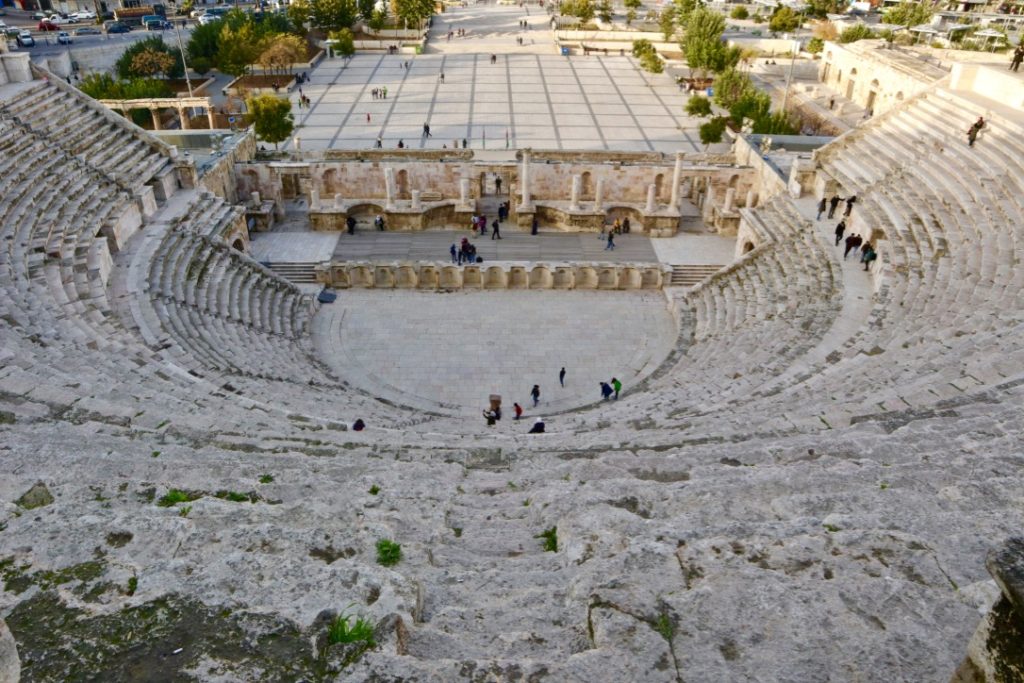
After the serenity of the desert the big city feels suffocating and I make for a Turkish bath where a team of Jordanian hunks work me over. Glory to the former Ottoman Empire.
Jerash
I use Amman to day trip to Jerash, former city in the Roman empire with some wonderfully preserved ruins, and Ajloun, a Muslim castle built to keep out the nasty Crusaders.
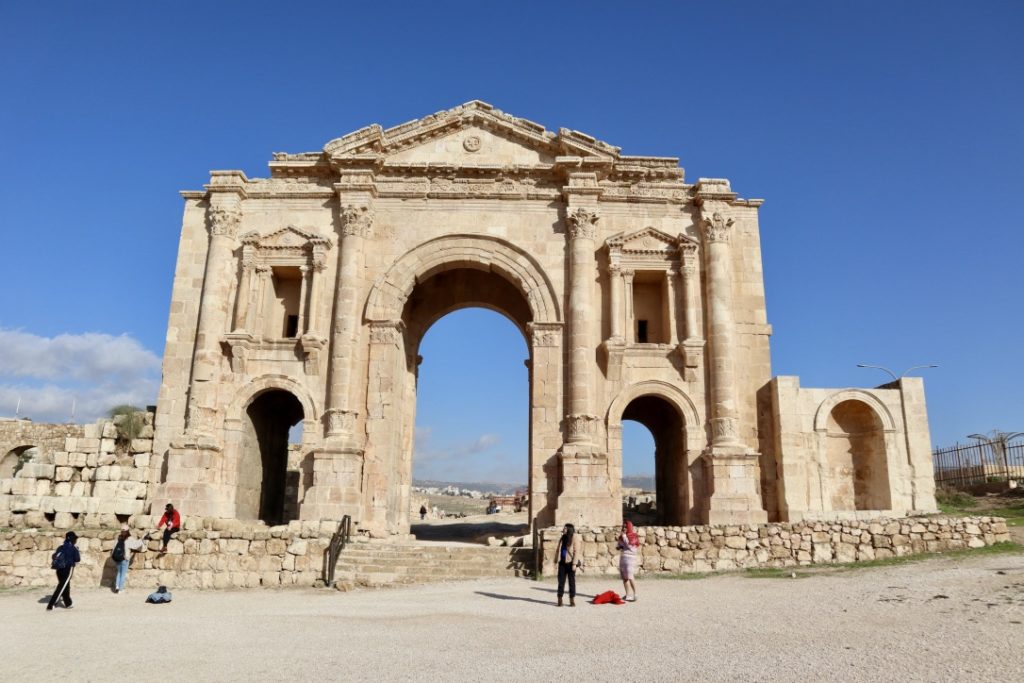
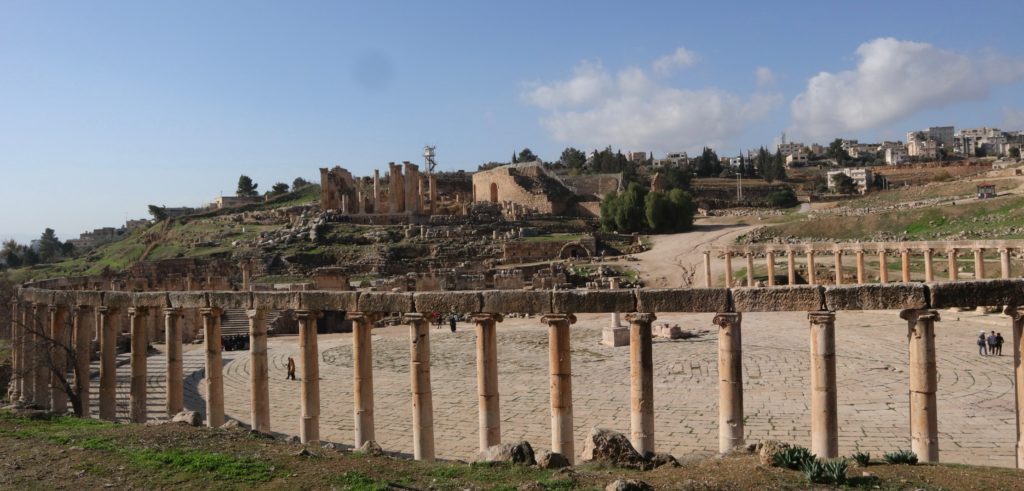
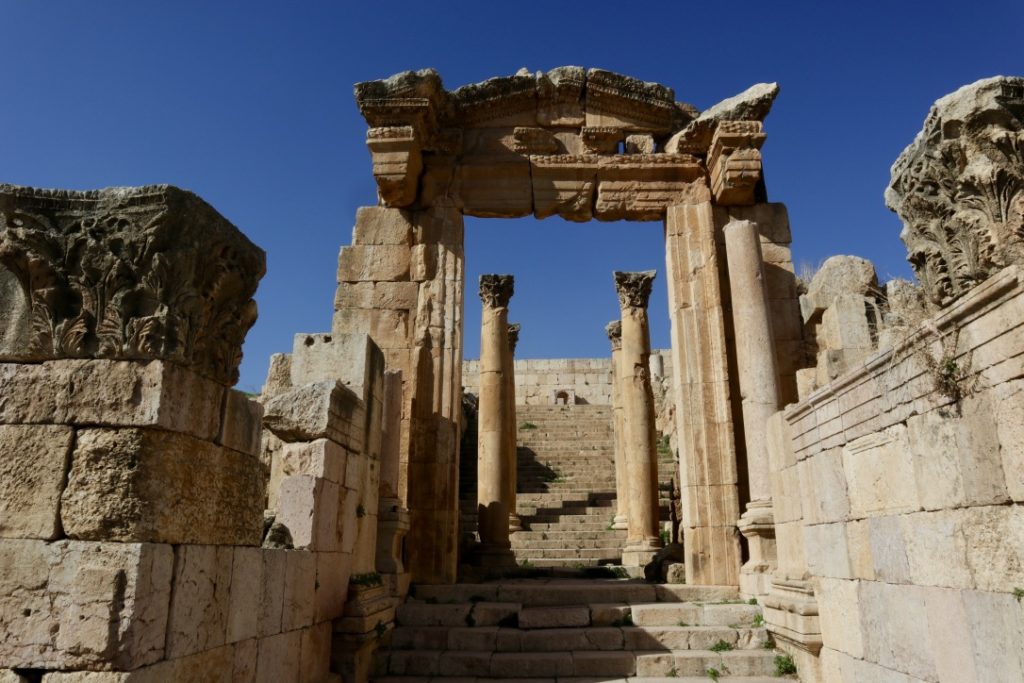 Artemis’ Temple, Jerash
Artemis’ Temple, Jerash

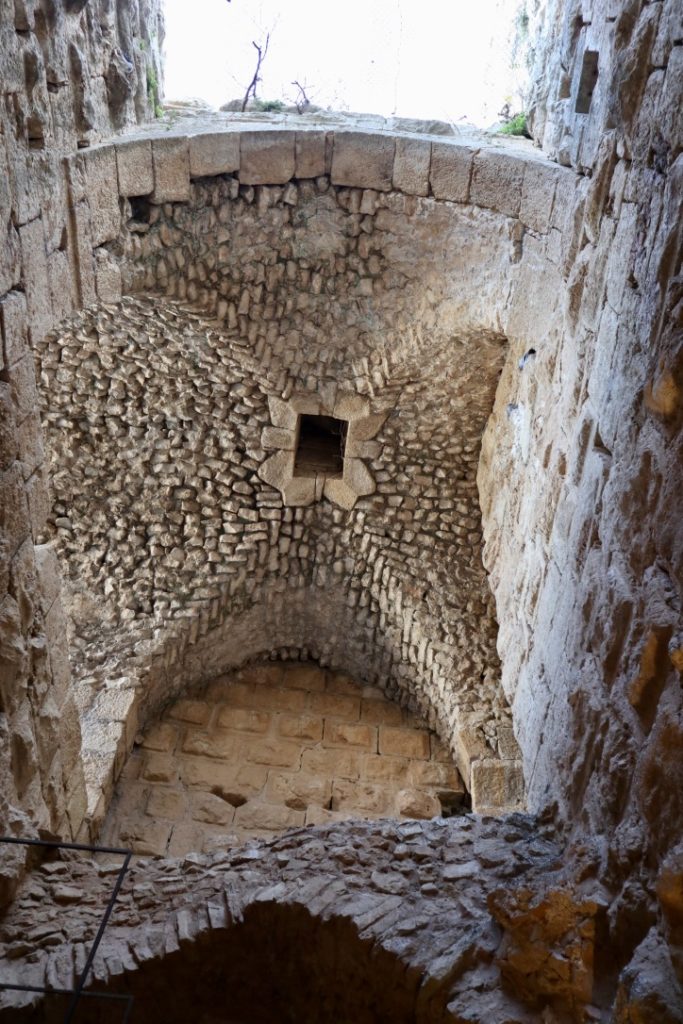
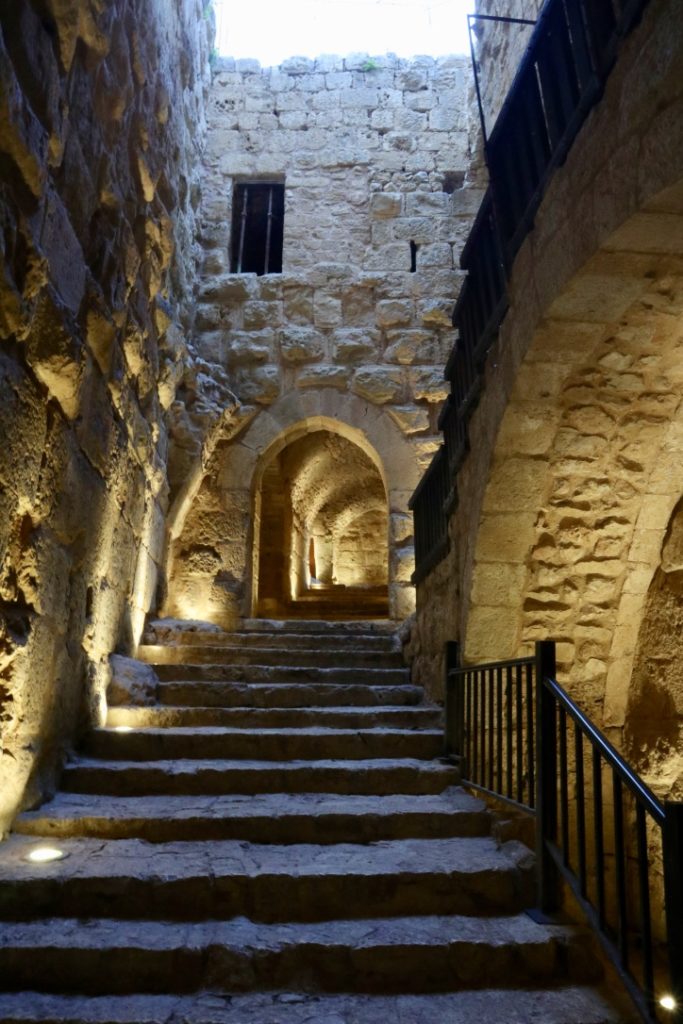
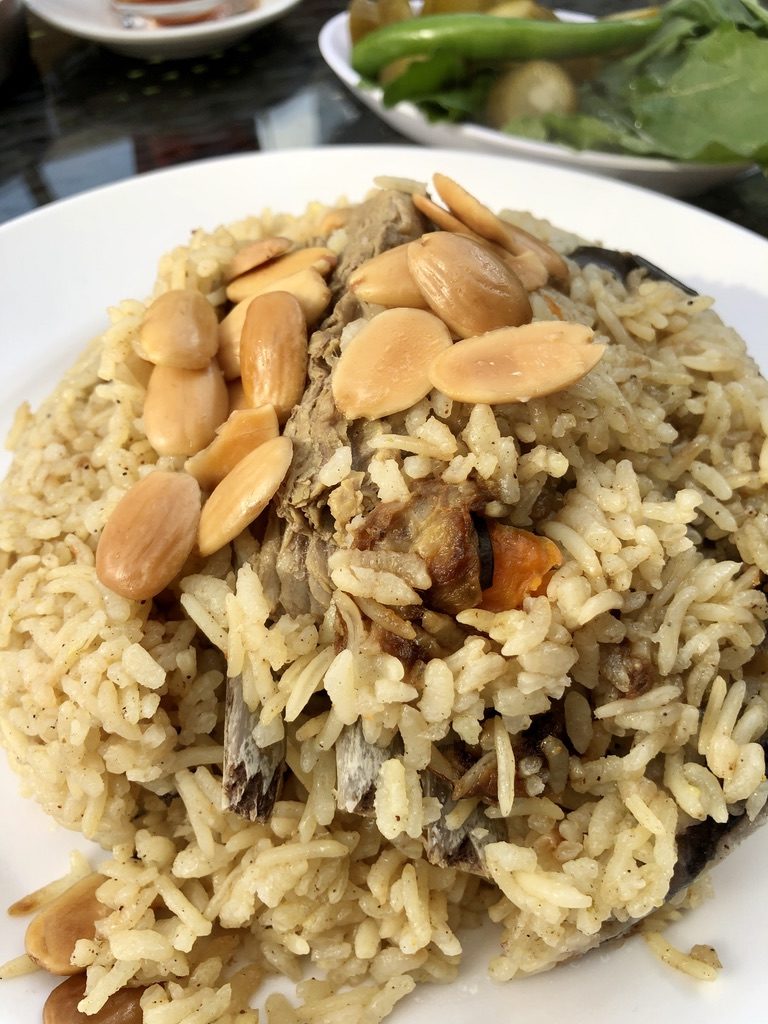
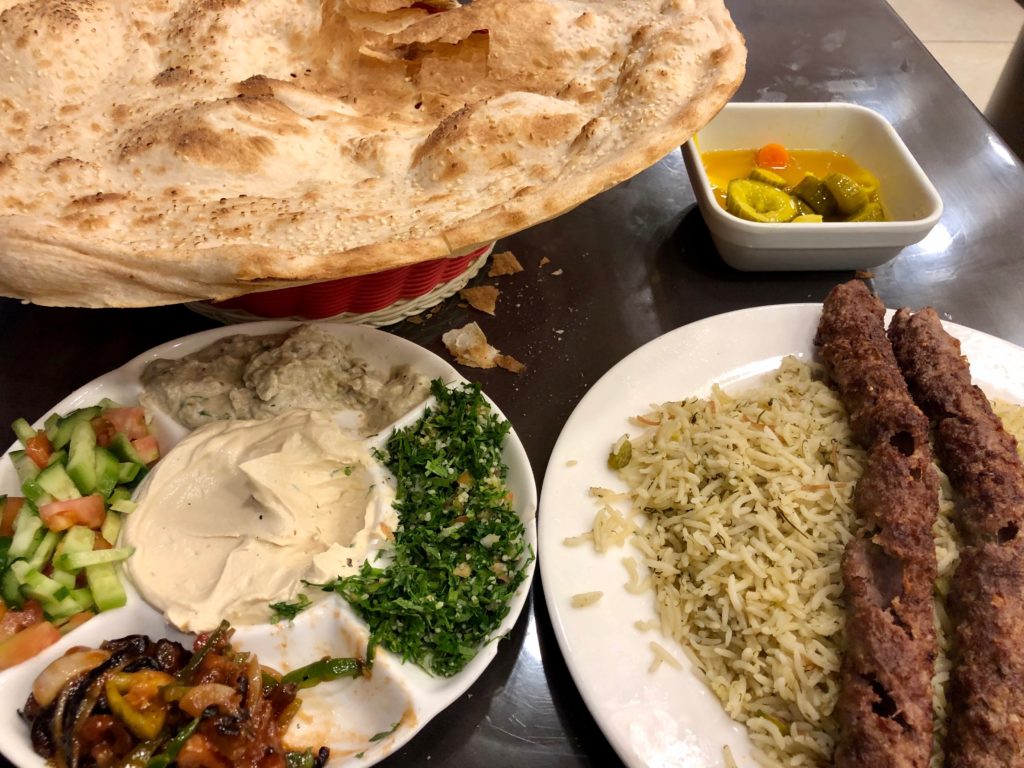

I get up before dawn to share a cab to the dreaded border crossing back into Israel. The Jordanian border guards start their day late and don’t move too quickly. In fact nothing moves too quickly other than an unease, as stories abound of being turned back. I chat up a Canadian of Pakistani descent then get stuck behind him in the final leg as an Israeli border guard repeatedly asks him five times who his father is, where he’s going, and where he’s staying. A bus load of VIP Chinese tourists behind me get restless. I guess they don’t get racially profiled here. But eventually he and everybody else gets through.
I detour back into Jerusalem to find a bus into the West Bank. While chowing down some yummy hummus (the Arabs make it better than the Israelis. Call it a healthy competition). I chat up an Israeli tour guide on a break who is uncommonly friendly. He raises horses in the Golan Heights in the off season. Not that Israelis aren’t friendly, but most I encounter are no nonsense and wear a social force field, not surprisingly when all your neighbours have sworn to wipe you off the planet. He’d seen combat and had seriously wounded a Palestinian. But he emphasizes that he also saved his life by attending to his wounds. At any moment he was mentally prepared (PTSD and all) and obligated to jump back into the fray.
Bethlehem
It’s almost seamless exiting Israel into Bethlehem if you have a friendly passport. The real danger are the cabbies who work in teams to scam you into a holy tour of the churches and sites in and around Bethlehem. Their aggression certainly doesn’t make a good impression and I must say they left me seething. But I recover and enjoy walking the vibrant old town and Arab market on the way to Manger Square.
The Church of the Nativity (where Jesus was reputedly born) is as frenetic and lacking in solemnity as the Holy Sepulchre. But that didn’t stop me (or the army of pilgrims from lining up and kissing the spot where he was born. OK, I skipped out on the kiss).
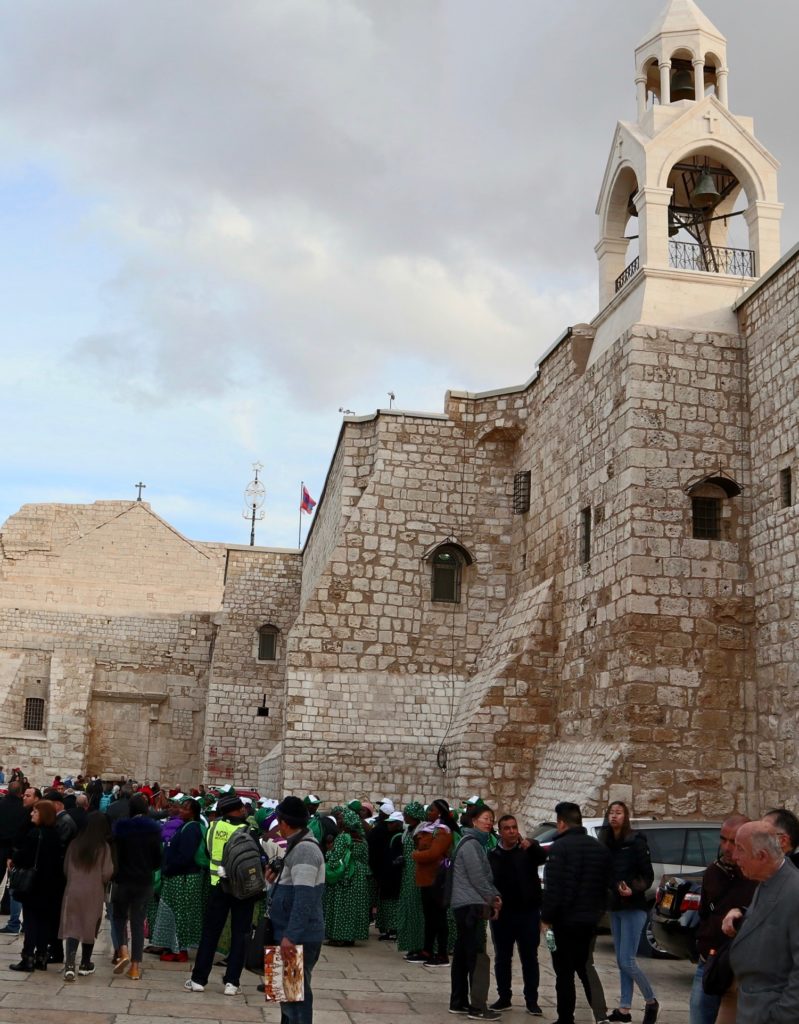
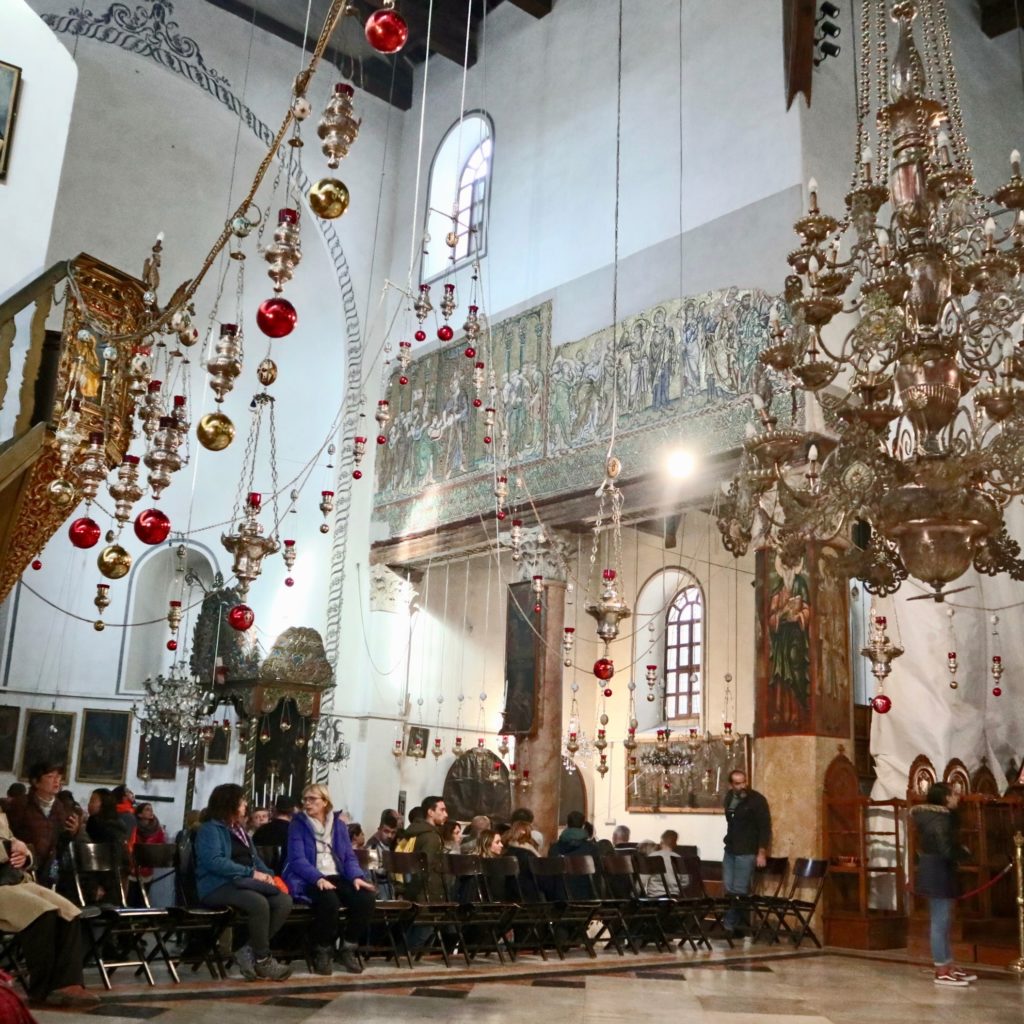


I overnight in a Bethlehem guest house, delighted to have my own bathroom and a nearby supply of beer. The staff are great. They see me sitting alone on the rooftop lounge and share their BBQ dinner with me, reminding me that not everything nor everybody is a hustle in this town, that Arab hospitality is part of their cultural fabric. I didn’t get to enjoy as much Jewish hospitality, I’m sure breaking the ice with them is different. Then I admonish myself for falling into the narrative of dividing people into Arab or Jewish. But it’s an historical, physical and mental reflex on this trip and likely of the region.
Later on in my room I scan the Internet for the latest news about the Trump fueled Iran/Iraqi crisis. The internet konks out. I hear gunfire. Lots of it and it’s nearby. I creep onto my balcony and see that a Spaniard is equally concerned. I assess how quickly I can make it back into Israeli, as if it would be safe there. We hoof up to the rooftop lounge. We see scores of tracer bullets going skyward from a nearby hill. The owner smiles at our ignorance. Years ago he said, many Palestinians died on that hill fighting the Israelis. This evening they are being honoured. The Spaniard and I are relieved. The acrid thought and sight of guns are a way of life and underscore both my naiveté and privilege.
I had plans to go further into Palestine to Hebron, an epicenter of the conflict and site of Abraham’s tomb. It’s supposed to be both joyful and sad, my kind of ambiguity. But I bail, not out of fear, but more exhaustion. I haven’t stopped moving since I left Canada. Instead I content myself with a quick walk about of the so called Security Wall (if you’re pro-Israeli, or wall of apartheid if you’re pro-Palestinian. Can’t we just call it ugly?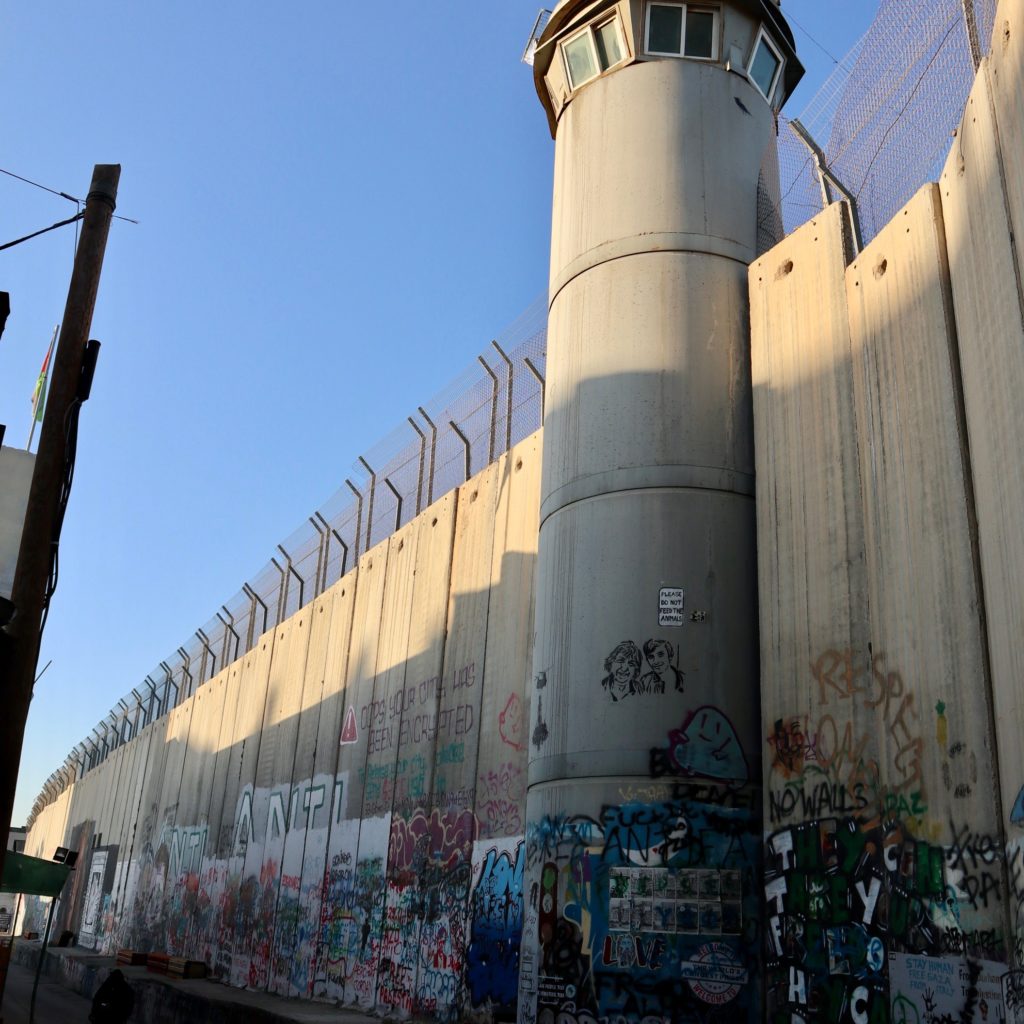
Along the way I’m stopped by a number of locals begging, each with a sad story about living in the refugee camps, an uncle with cancer, no food in the house…It’s my only such experience and reflects the economic disparity of life behind The Wall.
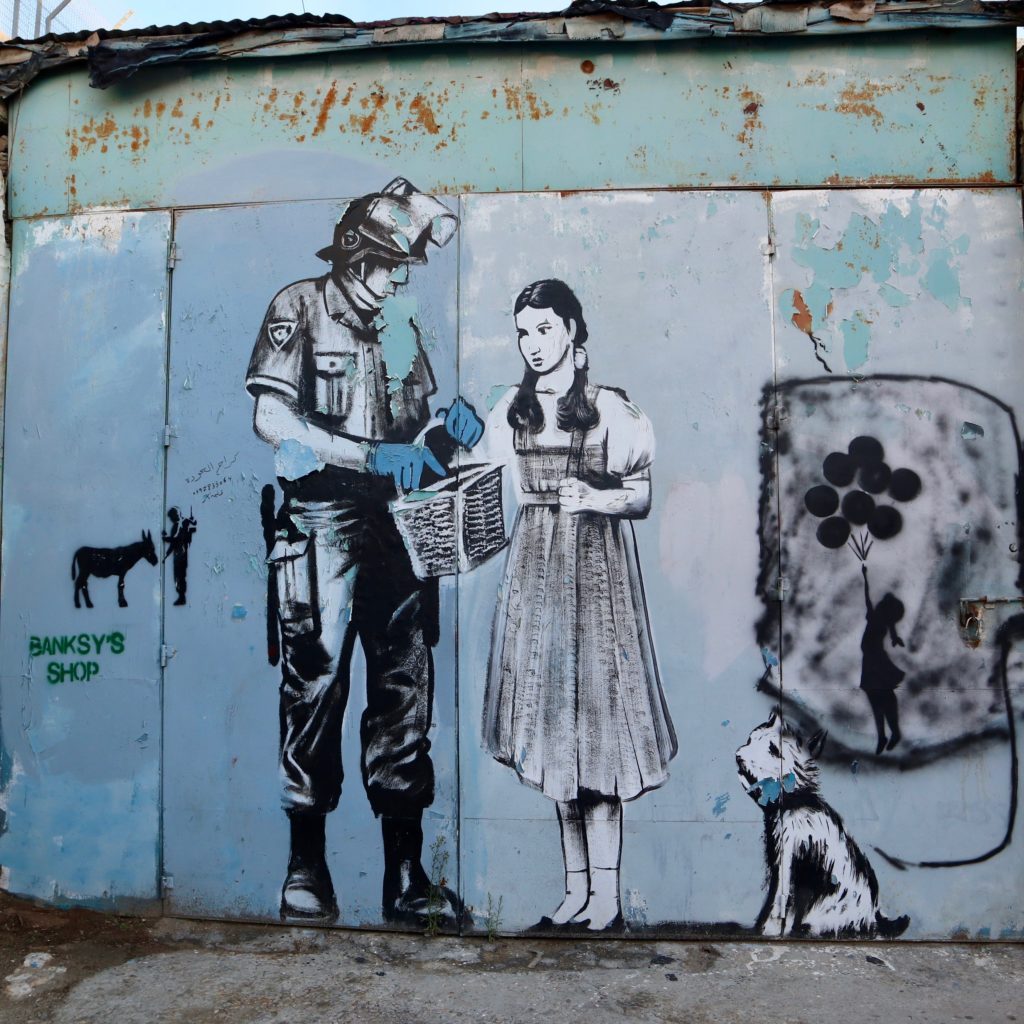
 I exit Bethlehem through the notorious checkpoint 300.
I exit Bethlehem through the notorious checkpoint 300.
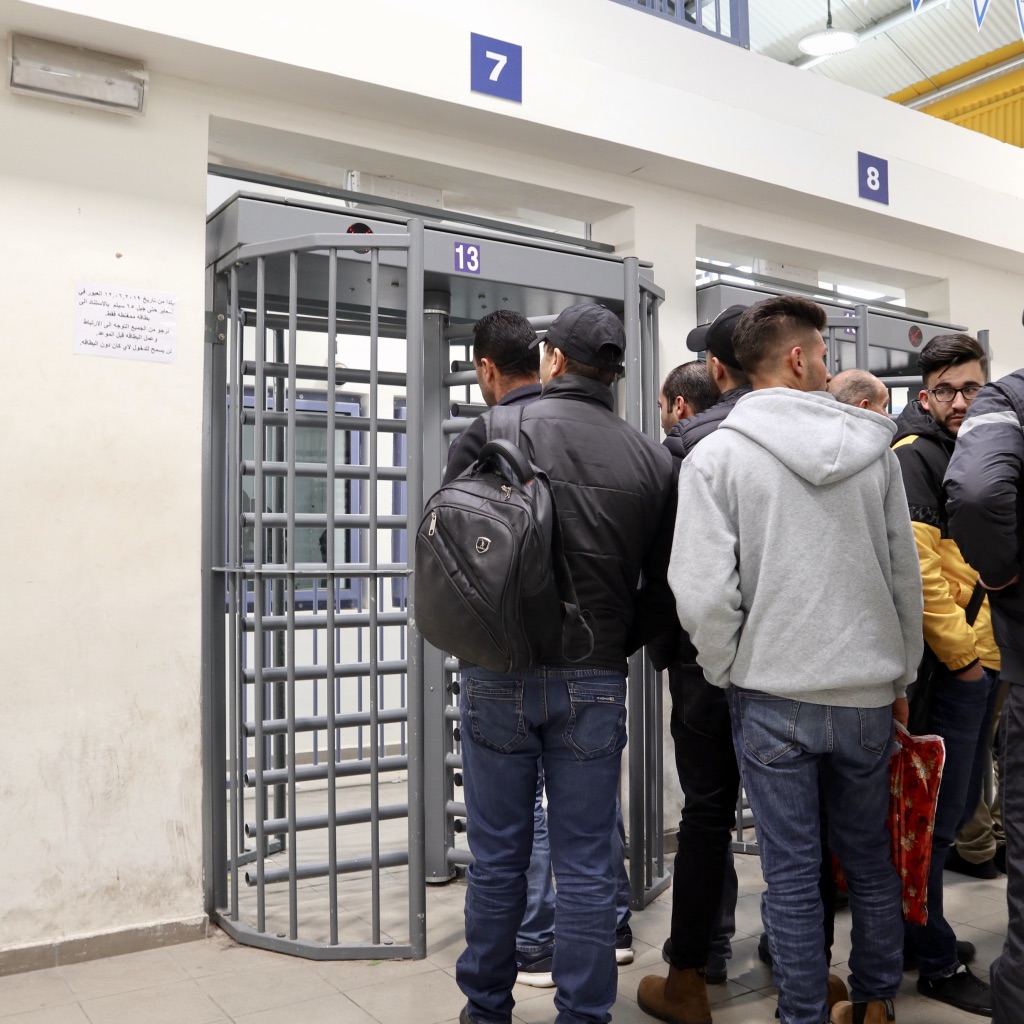
Local Palestinians can wait three hours to get to work in East Jerusalem where wages can be double what they’d make in the West Bank. Fortunately it’s a quiet morning and I sail through in minutes. Some locals are detained. But the sanguine looks on their faces suggest it’s part of the dance. On the bus, stern looking, armed Israeli soldiers do another once over of the Arabs. I might as well be dead to them, as I’m completely ignored.

Back to Jerusalem
I return to Jerusalem and Airbnb a room from a couple newly arrived, Roque–an astronomer from Spain, and Daro–a chef from Argentina.
The life of an astronomer takes you around the world, and they’ve lived together in four countries as a couple. They are very much aware of the prevailing Jewish orthodoxy in Jerusalem and are for the first time, unsure how to navigate the local vibe towards them.
On my last full day I poke around East Jerusalem but wind up back downtown in search of the ultimate last supper, ready to drop some shekels, preferably something that doesn’t come with pita bread and some form of legumes. Before I know it, the Shabbat strikes. It’s the weekly day of rest and begins Friday sundown until Saturday night. All public buses shut down, vendors board up, everything including restaurants close. Taxis feast on the stranded, but I can’t get one.
I quickly walk back into East Jerusalem, where the Arabs are always open for business and have their own buses. I get on one headed to the West Bank. It’s filled with silent, weary workers who look like they could have been in line for hours trying to cross into Jerusalem early this morning. I make my way back to my Airbnb and am about to surrender to a dinner of compressed sawdust disguised as protein bars, when Roque and Daro remind me how holy and special the city and its people are, as they uncork wine and begin rolling out dough for home made fettuccine. Amen and praise be to Allah!!

We don’t solve the world’s problems over a wonderful dinner, but Roque dumbs down what he does as an astronomer, which is the study of light in all its glory and simplicity. He makes it all sound so uncomplicated, so within reach. Yet it’s not. I simplify it even further and ponder how creation started with light. How what we see now in the stars happened long ago and is visible and felt in this instance, gripping us, entrancing us, like history, like the Middle East. It underscores how little I know, but also the joy of being curious.
It’s the perfect endpoint to an extraordinary trip where so much could have gone sideways but didn’t, in a fascinating region still very much defined by the moment and haunted by its past.
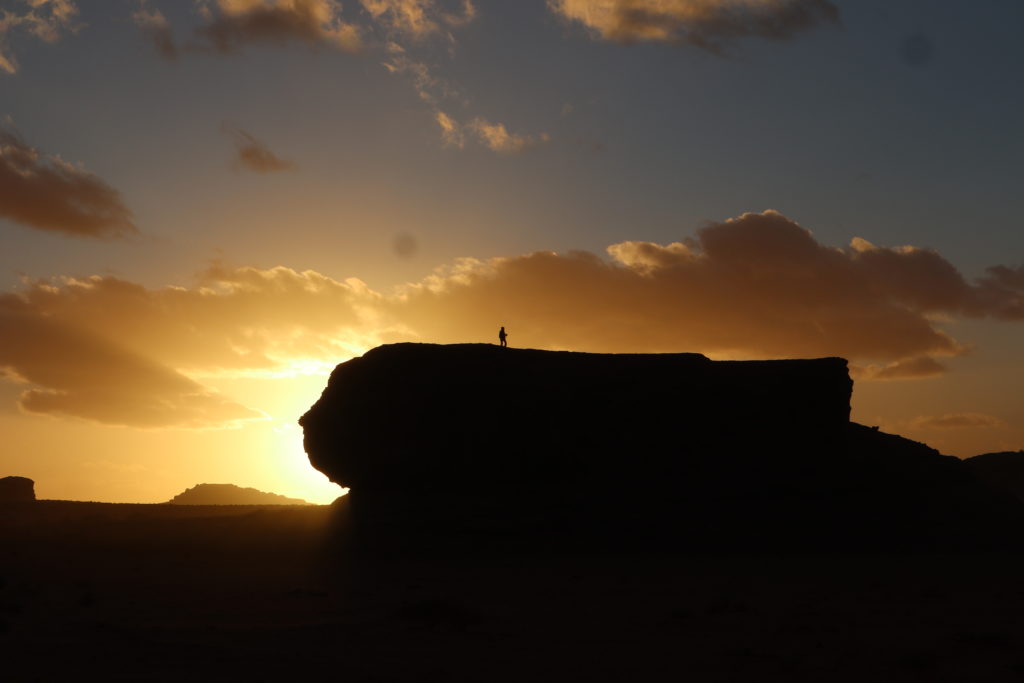
Hmmn… I wonder where the light will lead me next?
